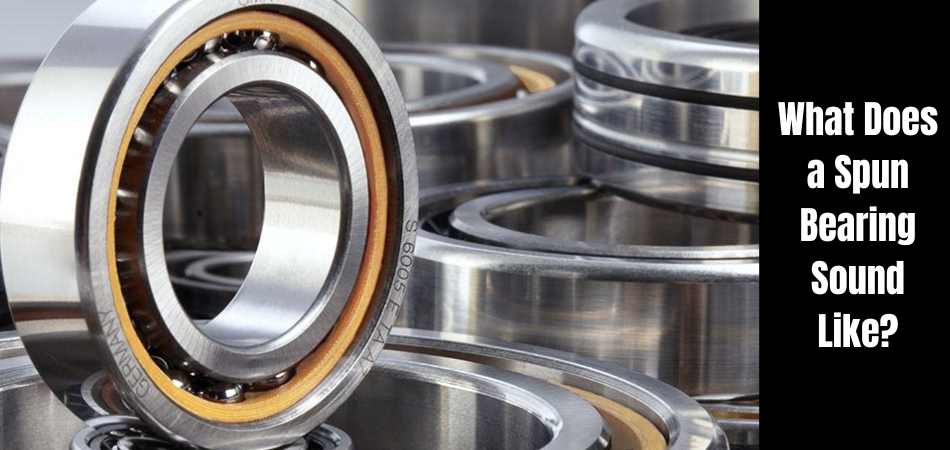
“Spun bearing” is one of the most hated terms in automotive engineering. This expression denotes a catastrophic breakdown that can result in costly repairs and extended downtime. But what exactly is a spun bearing, and why is it so problematic? Let’s dig deeper into this subject.
What Is a Spun Bearing?
A bearing is a tiny, circular component that helps minimize friction between moving elements in an engine. It acts as a buffer between the crankshaft and the connecting rod, allowing the engine’s internal components to rotate smoothly. When a bearing becomes “spun,” it means it has rotated out of its intended position and is no longer capable of properly supporting the crankshaft. This can cause serious damage to the engine and potentially render it inoperable.
What are the Common Causes of Spun Bearings in Vehicles?
You might have encountered the term “spun bearings” and wondered what it meant if you own a car. A spun bearing occurs when the tiny layer of soft metal that separates the drive shaft from the engine block wears away, allowing direct contact between these two components. This can cause catastrophic engine damage and should not be overlooked.
In this article , we’ll go over the most prevalent causes of spun bearings in automobiles, as well as how to spot them before they become a significant problem. So, let us get started!
1. Lack of lubrication
Inadequate lubrication is one of the leading causes of spinning bearings. The thin layer of oil that divides the crankshaft and engine block is critical for decreasing friction and preventing metal-to-metal contact. Bearings may easily wear away without sufficient lubrication, resulting in a spinning bearing.
To avoid this, it is critical to check your vehicle’s oil levels on a regular basis and change the oil at the appropriate intervals. It is also critical to use high-quality oil that satisfies the criteria of the manufacturer.
2. Overheating
Overheating is another typical cause of spinning bearings. When an engine runs too hot, the metal components expand and scrape against one other, causing the bearings to wear out prematurely. This is especially true for high-performance automobiles or vehicles driven regularly under high-stress circumstances.
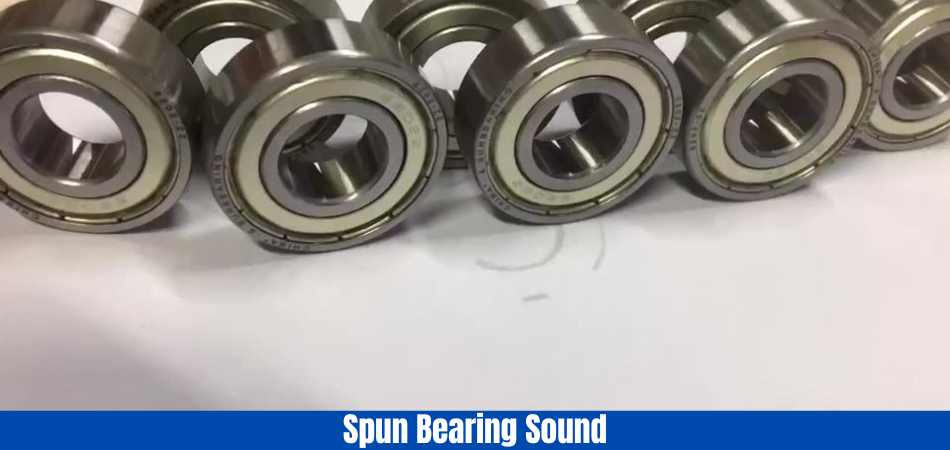
To avoid overheating, keep your vehicle’s cooling system in good working order and fix any problems, such as a defective thermostat or radiator, as soon as possible.
3. High RPMs
Long durations of racing or revving your engine at high RPMs can also result in spinning bearings. This is due to the higher speed putting more strain on the bearings, leading them to wear out faster.
If you own a high-performance car or love driving at high speeds, you must inspect and replace your bearings on a regular basis.
4. Incorrect installation
Spun bearings are sometimes caused by faulty installation during the engine’s construction or maintenance. This can include employing incorrect torque parameters or failing to line the bearings with the crankshaft.
To avoid this, constantly adhere to the manufacturer’s directions when undertaking engine repair or have it done by a competent technician.
A minor error during installation might cause major problems later on.
What Does a Spun Bearing Sound Like?
Now that we’ve defined what a spinning bearing is, let’s get to the bottom of the question: what makes it sound like? Unfortunately, there is no one correct response to this question because the sound varies based on the degree of the problem and the type of engine.
However, some of the most prevalent sounds associated with a spinning bearing are banging or rattling noises emanating from the engine, especially during acceleration. Power or overall engine performance may potentially suffer as a result.
What Should You Do If You Hear a Spun Bearing?
If you believe that your engine has a spinning bearing, you should treat the problem as quickly as possible. Driving with a broken bearing might result in more damage and perhaps more expensive repairs.
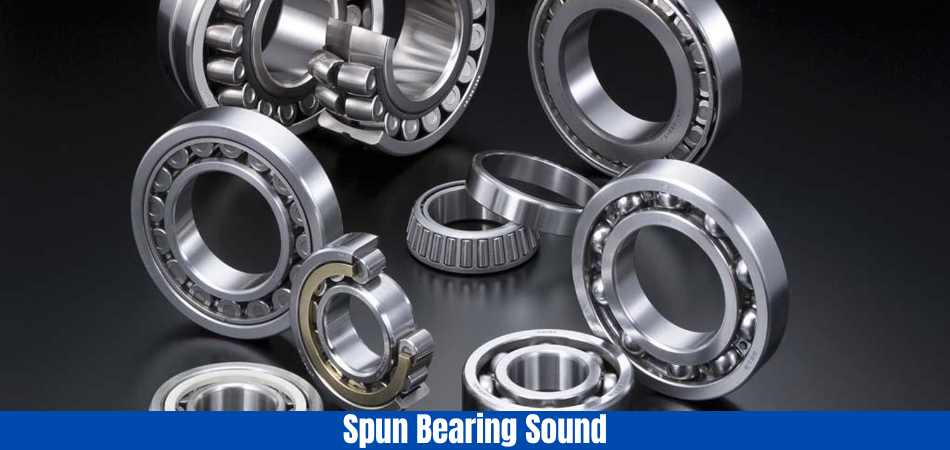
The first step is to pull over and have the car towed to a reputable mechanic for evaluation. Depending on the extent of the damage, the bearing and other engine components may need to be replaced.
What are the Signs of Spun Bearings?
So, how can you determine whether your automobile has spinning bearing problems? Here are some warning indicators to check for:
1. A knocking or rattling sound:
If your engine makes a loud banging or rattling noise, it might be an indication of a spinning bearing. This sound is typically more noticeable at higher speeds and might indicate that the crankshaft is not correctly connected to the engine.
2. Oil pressure is low:
Spun bearings, which are responsible for dispersing oil throughout the engine, might cause a decline in oil pressure. If your oil pressure indicator illuminates or your gauge displays low readings, it might be a symptom of spinning bearings.
3. Engine overheating:
When bearings fail, they might also inhibit appropriate engine lubrication. This can cause more friction and heat, which might cause your engine to overheat.
If you see any of these signs, you should have your automobile evaluated by a professional as soon as possible. Ignoring spinning bearing troubles can cause severe engine damage and cost you hundreds of dollars in repairs.
How to Prevent Spun Bearings
Let’s speak about prevention now that you know what spun bearings are and how to recognise them. Here are some pointers to assist you avoid spinning bearings in your car:
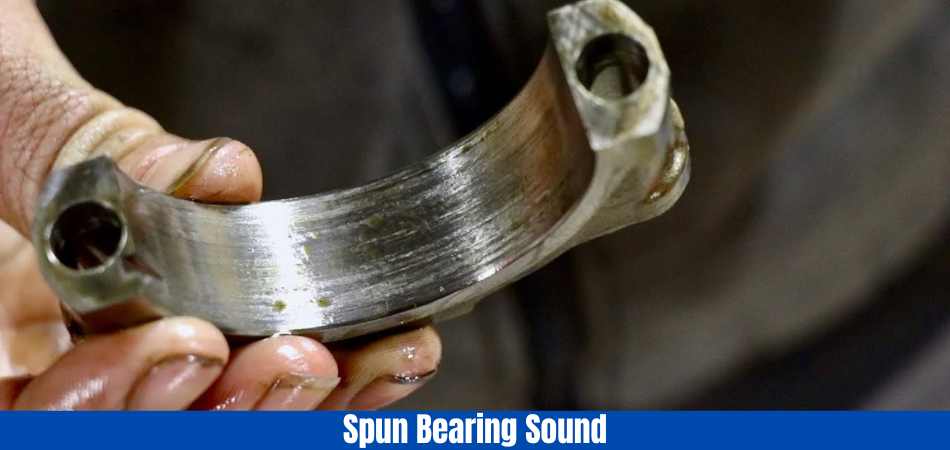
- Oil changes on a regular basis: As previously stated, inadequate lubrication is a typical cause of spinning bearing problems. To avoid this, be sure to get your oil changed at the suggested intervals by your automobile manufacturer.
- Make use of high-quality oil: Not all engine oils are the same. Choose high-quality synthetic oils that can endure intense temperatures and pressures to guarantee appropriate lubrication and limit the danger of spinning bearings.
- Don’t overrev your engine: High-revving engines place a great deal of strain on the bearings, forcing them to wear out faster. Avoid overrevving your engine, especially while it’s cold.
- Keep an eye on your oil pressure: It’s critical to check your oil pressure on a regular basis and fix any concerns as soon as possible. Low oil pressure might indicate worn-out bearings or other engine issues that require care.
What is the negative side of spun bearing?
So, what are the disadvantages of a spun bearing? For starters, it can severely reduce the performance and efficiency of your engine. A rotating bearing increases friction within the engine, resulting in power loss and poor fuel efficiency. This can also generate greater heat and vibrations within the engine, which can cause more damage if not handled.
Furthermore, a spinning bearing might seriously harm other engine components. As the bearing spins irregularly, it might hit other engine components such as the crankshaft or connecting rods, causing further wear and strain. If not treated promptly, this might result in an expensive repair bill and perhaps engine failure.
To summarise, while a spun bearing may appear to be a small issue, it should not be treated lightly. To avoid this problem entirely, it is critical to address any indicators of excessive bearing wear and implement preventive measures.
Regular maintenance and correct lubrication are essential for keeping your engine running smoothly and avoiding the consequences of a spinning bearing. Don’t ignore your car’s health and be on the watch for any possible problems, such as a spinning bearing. In the long run, both your wallet and your automobile will thank you. Have a safe and enjoyable drive! As a result, it is critical to properly maintain your vehicle.
Conclusion
A spun bearing is a major problem that can cause substantial engine damage and costly repairs. Car owners must frequently maintain their cars and solve any possible concerns before they become big difficulties. If you ever hear weird noises emanating from your engine, have it examined by a professional right away to avoid the dreaded spinning bearing.
You can assist prevent this problem and keep your automobile operating smoothly by taking adequate care and attention. To avoid the repercussions of a spinning bearing, constantly check your oil level and perform routine engine maintenance inspections. Continue to drive safely!
FAQs
Is the sound of a spinning bearing always the same, or may it alter amongst engines?
The sound of a spinning bearing varies based on engine type, bearing placement, and the severity of the damage. It is critical to listen for unexpected noises and seek expert assistance.
What additional symptoms may be associated with the sound of a spinning bearing?
Symptoms may include increased engine vibration, decreased power, loss of oil pressure, and increased engine temperature, in addition to the unique sounds. These concerns are frequently noticed together.
Can I continue driving my car if I suspect a spinning bearing?
If you suspect a spinning bearing, it is not suggested that you continue driving. This can result in serious engine damage and ultimate engine failure. It is preferable to get the problem assessed and rectified as soon as possible.
What should I do if I hear the sound of a spinning bearing in my engine?
If you suspect a spinning bearing, you must immediately stop driving the car. Tow it to a certified mechanic for an in-depth inspection and repair.
How can I keep my engine’s spinning bearings from causing damage?
Regular maintenance, such as oil changes and correct lubrication, is essential for avoiding spinning bearing damage. Follow the manufacturer’s maintenance period and oil specification recommendations.
Is it possible to fix a spinning bearing, or does it necessitate a complete engine replacement?
The appropriate action will be determined by the degree of the damage. A spun bearing can be fixed in certain situations, but it is more likely to necessitate an engine rebuild or replacement, which can be costly.
How much does it cost to repair or replace an engine with spinning bearing damage?
The cost depends on the degree of the damage, the kind of vehicle, and the mechanic’s charges. Repairing or replacing an engine with spun bearing damage can be a significant expense.
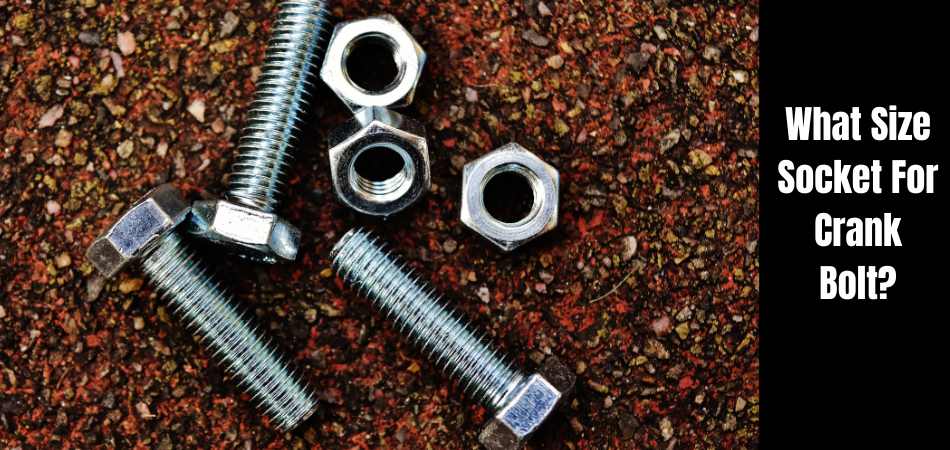
Knowing how to do simple maintenance activities on your vehicle as a car owner will save you time and money in the long term. One of the most basic jobs that every automobile owner should be familiar with is changing their oil. However, before you begin changing your oil, you must first ensure that you have the necessary instruments. In this blog article, we’ll look at a key item that’s sometimes overlooked: the crank bolt socket.
What is The Importance of Crank Bolts?
Crank bolts may appear tiny in comparison to other bike components, but they are critical in ensuring that your pedals work smoothly. These bolts, which are normally composed of steel or titanium, are intended to endure high torque forces. This is significant because your crank arms transfer power from your legs to the chain, propelling the bike forward.
Furthermore, crank bolts aid in the alignment of the crank arms and bottom bracket spindle. These bolts can become loose or broken, resulting in wobbly pedals, unequal power distribution, and even injury.
What are the Types of Crank Bolts?
Crank bolts vary in size and form depending on the model of crankset you own. Square-tapered and splined cranksets are the most prevalent. Splined cranksets utilise two separate bolts to attach both crank arms, whereas square-tapered cranksets use a single bolt to lock both crank arms.
When buying crank bolts, make sure they are appropriate with your crankset and bottom bracket. Using the incorrect size or type of bolt might result in catastrophic injury to your bike and jeopardise your safety.
What is the Role of Sockets?
Now that we’ve discussed the significance and varieties of crank bolts, let’s look at their sockets. A socket is a tool for tightening or loosening bolts and nuts. Crank bolts require a socket with a hexagonal or square-shaped aperture that matches the geometry of the bolt head.
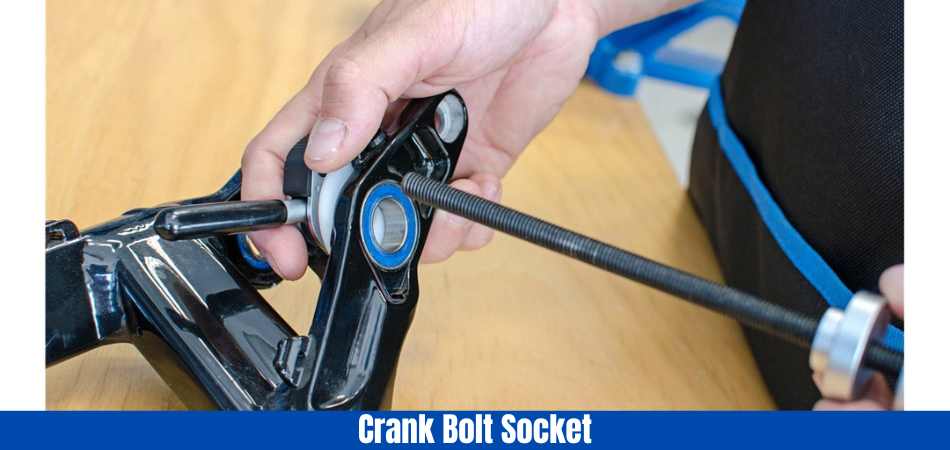
When working with crank bolts, it is critical to use the suitable size socket. A socket that is too tiny might peel the sides of the bolt head, making subsequent removal difficult. A socket that is overly large, on the other hand, may not offer enough grip and may round off the bolt head.
How to Choose the Right Socket Size?
There are two options for selecting the correct socket size for your crank bolts: metric and imperial. Metric measurements are in millimetres (mm), whereas imperial measurements are in fractions of an inch (e.g. 1/4″, 3/8″). The size of your socket will be determined by the diameter of your crank bolt. The majority of current bikes have metric bolts, although older bikes may contain imperial bolts.
To get the right socket size for your crank bolt, consult the owner’s handbook or measure the bolt using a calliper tool. It’s generally a good idea to have a variety of socket sizes on available in case you come into any unusual bolt sizes.
Why is choosing the right socket important?
The crank bolt is an important component of your car’s engine since it secures the harmonic balancer. The harmonic balancer, commonly known as the crankshaft pulley, is in charge of absorbing and decreasing engine vibrations. The harmonic balancer can loosen or even break off if the crank bolt is not properly tightened, causing substantial damage to your engine.
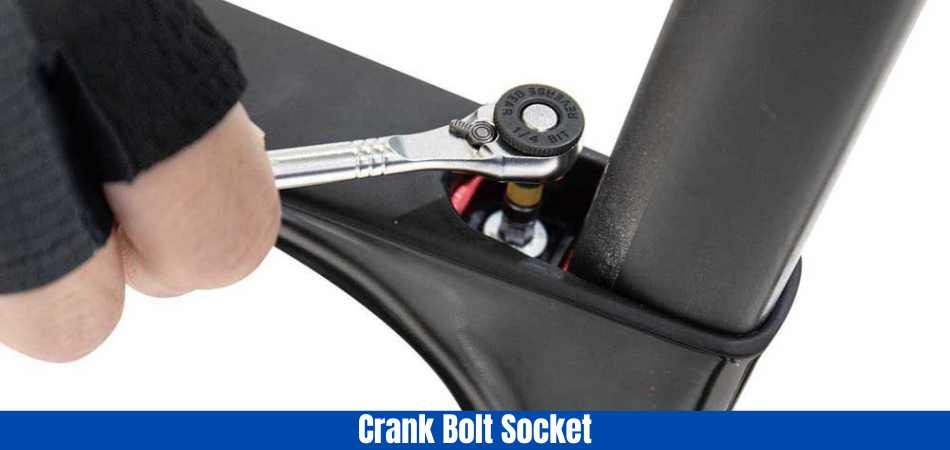
A socket is a type of wrench that is used to turn bolts and nuts. It is made out of a cylinder head with grooves or notches that match to the size and form of different fasteners, as well as a handle or ratchet for imparting torque. Sockets exist in a variety of sizes and shapes, including normal (six-point) sockets, deep sockets, impact sockets, spark plug sockets, and more.
So, why is it critical to select the proper socket? Here are a few examples:
1. Accurate Fit
Using the correct socket size guarantees an exact fit for your fasteners, just as getting the right shoe size may make all the difference in your comfort. Using the incorrect-sized socket can harm both the bolt/nut and the tool, resulting in additional costs and irritation. It’s always preferable to stick with the size advised by the manufacturer or to experiment with other sizes until you find one that fits snugly.
2. Proper Torque
Different bolts and nuts necessitate a different amount of torque (force). Using the incorrect socket size can lead to over-tightening or under-tightening, both of which can compromise the strength and integrity of your project. It is critical to utilise the correct socket size to ensure that the correct amount of torque is applied for safe and secure attachment.
3. Compatibility
Not all sockets are made equal, and some are only intended for certain types of bolts or nuts. A crank bolt, for example, may have a different shape or size than a standard hex nut. If you use the incorrect socket, you will be unable to spin the fastener or, worse, you will damage it. It is critical to read the project specs and select the appropriate socket type.
4. Efficiency
Using an incorrectly matched socket can be both frustrating and time-consuming. You can find yourself jumping between different sizes all the time, causing delays in your project. By starting with the correct socket size, you may work more efficiently and finish the project in less time.
Finally, while it may appear to be a minor detail, selecting the proper socket is critical for any job that contains fasteners. It guarantees precision, safety, compatibility, and efficiency. So, the next time you’re working on a project, don’t forget about this crucial equipment and stock up on a range of socket sizes to meet all of your demands. Have fun with your DIY projects! S
o, the next time you’re working on a project, don’t forget about this crucial equipment and stock up on a range of socket sizes to meet all of your demands. Have fun with your DIY projects!
What size socket do you need?
The most typical size for a crank bolt is 19mm, but double-check before beginning any maintenance operation. The size of your crank bolt can be determined by reviewing your vehicle’s manual or using a measuring tool such as a calliper. To guarantee a proper and secure fit on the bolt, the socket must be the appropriate size.
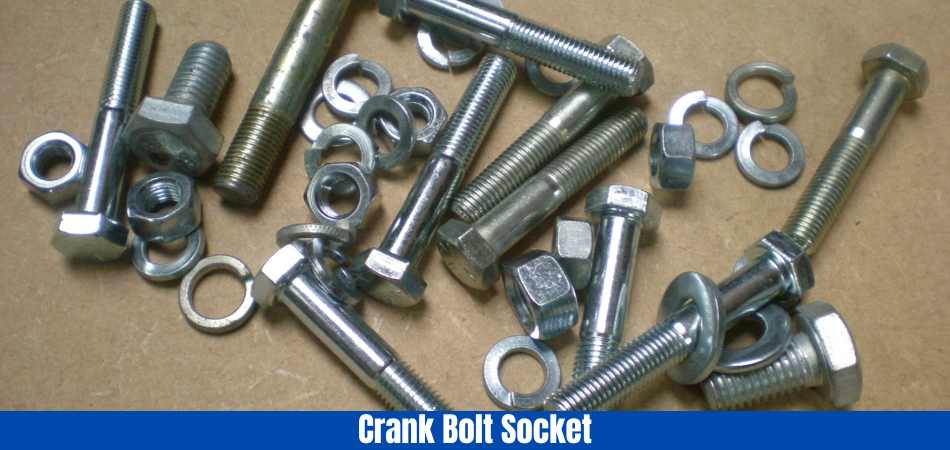
Other factors to consider
Aside from the size of your crank bolt, you need also consider the sort of socket you’re utilising. For crank bolts, a deep or impact socket is recommended because it provides a secure grip and can handle high torque levels without breaking. To minimise disasters, ensure to use a high-quality socket from a respected manufacturer.
Crank Bolt Tightening Procedure
Tightening crank bolts properly ensures that your pedals and crank arms are securely fastened to the bottom bracket of your bike. You are in are at risk of loose or misaligned parts, which may give rise to unpleasant rides or even accidents if not properly tightened.
The Do’s of Crank Bolt Tightening
- Now that you have the correct socket size, here are some things to remember when tightening your crank bolts:
- Make use of a torque wrench: A torque wrench is a tool that measures the amount of force used to tighten fasteners. It is strongly advised to use one for crank bolt tightening because overtightening can potentially cause damage.
- Follow the manufacturer’s recommendations: Always consult your bike’s owner’s manual for exact torque recommendations for your crank bolt.
- Tighten in a star pattern as follows: When tightening the crank bolt, make sure to do so in a star pattern. This ensures that the pressure is spread uniformly and prevents misalignment.
The Don’ts of Crank Bolt Tightening
- It’s just as vital to know what to do as it is to know what not to do while tightening your crank bolts:
- Don’t apply too much force: As previously stated, overtightening might harm your crank bolt or other components. It is critical to employ the proper amount of torque and not apply too much force.
- Remember to check in on a frequent basis: It is recommended to check your crank bolts for tightness every few weeks, especially if you ride frequently. This helps to avoid potential problems and assures your safety while riding.
Conclusion
Choosing the perfect socket for your crank bolt may appear to be a little matter, but it may make or break your vehicle’s maintenance. You can assure a secure fit and avoid engine damage by using the proper size and type of socket.
FAQs
How can I identify the suitable socket size for the crank bolt on my specific vehicle?
The exact socket size for your vehicle’s crank bolt can be found in the service manual or by consulting an automotive professional. It may differ from one car to the next.
Is there a standard socket size for crank bolts, or does it depend on the type and model of the car?
Crank bolt socket sizes can vary greatly based on the brand and model of the car. Because there is no universal size, it is critical to examine the exact specifications for your vehicle.
Aside from the socket, what other tools do I need to remove a crank bolt?
A breaker bar, torque wrench and maybe an impact wrench will be required in addition to the socket for simpler removal and exact torque application.
Is there anything I should avoid doing when using a socket on a crank bolt?
It’s critical to check that the socket and tools are in good working order and properly aligned with the bolt. Overtorquing or using the incorrect size socket can cause damage to the bolt or adjacent components.
Should I use a 6-point socket or a conventional 12-point socket to remove a crank bolt?
For crank bolts, a 6-point socket is often suggested since it gives better grip and eliminates the possibility of rounding off the bolt head. A 12-point socket, on the other hand, can be used if it fits snugly.
Can a crank bolt be removed without a socket?
While it is technically possible to remove a crank bolt without a socket, doing so is strongly discouraged due to the risk of damaging the bolt and surrounding components. The safest and most successful technique is to use the right socket.
What should I do if I don’t have the correct socket size for the crank bolt on my vehicle?
If you don’t have the correct socket size, you must purchase it to avoid breaking the bolt or jeopardising the repair. Consult your owner’s manual, go to an auto parts store, or seek professional assistance.
Are there any torque criteria I should follow when tightening the crank bolt once it has been removed?
Yes, when tightening the crank bolt, it is critical to adhere to the manufacturer’s suggested torque specifications for your vehicle. Over- or under-torquing might cause difficulties.
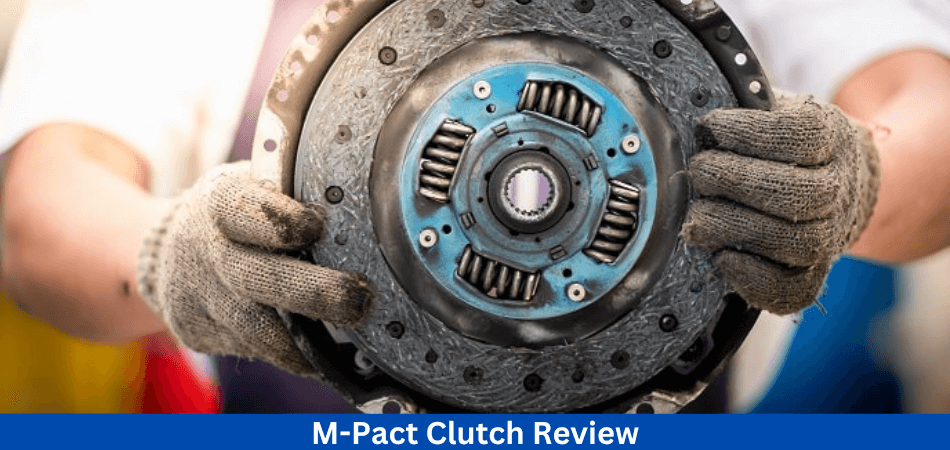
If you want to enhance the performance of your car, you might want to consider upgrading your clutch. M-Pact Clutches are highly reliable clutches that provide a range of benefits for car enthusiasts. High-performance clutches like the M-Pact handle more power than standard clutches.
These high-quality materials can be used under a variety of conditions and are capable of withstanding high-speed driving conditions. So let’s have a look at the “M-Pact Clutch Review”
Throughout this M-Pact Clutch Review, we’ll explore the features, pros, and cons of this product to help you decide whether it’s right for you.
What’s A Clutch?
A clutch in an automotive vehicle is essentially an on-demand coupling that mates the engine with the transmission until a gear change is initiated by pressing the clutch pedal.
Whenever you depress the clutch pedal, you are cutting the engine power from flowing through the transmission for a moment. Upon releasing the clutch pedal, the engine and gearbox are once again linked.
A clutch is necessary because internal combustion engines operate efficiently only within a narrow band of engine speed which is known as the power band, which is why cars need a transmission.
Your transmission uses different gears to route power through that powerband at various speeds. In response to your need for speed, the transmission can shift between gears, stepping up or down engine power. Read more here.
What Does the Clutch Do?
Your car’s clutch connects two rotating shafts, allowing three functions.
- In order for the shafts to spin at the same speed, they lock together
- When the pedal is partially depressed, the shafts slip by a controlled amount
- The shafts can also be decoupled so they spin at different speeds.
The wheels don’t turn all the time, but your engine does. Separating the two is necessary for speeding up, slowing down, or stopping without killing the engine.
When your car is moving, your clutch engages. Through a diaphragm spring, the pressure plate exerts a constant force on the driven plate, locking it in place. The clutch disengages when you depress the pedal.
A release bearing pushes against the diaphragm spring’s center, releasing the clamping pressure from the pressure plate. By doing this, you can change gears without allowing the engine’s power to reach the wheels.
Transmission re-engaged when the pedal released. As a result, the friction linings of the driven plate take over the drive once again.
How Many Clutch Parts Are There?
Combined, there are five clutch parts that make up the clutch plate. Additionally, the clutch is closely related to the transmission and the flywheel.
Cover Plate
Flywheels attached to metal housings that connect them to clutch assemblies. Through the clutch disc, engine torque transferred to the gear shaft.
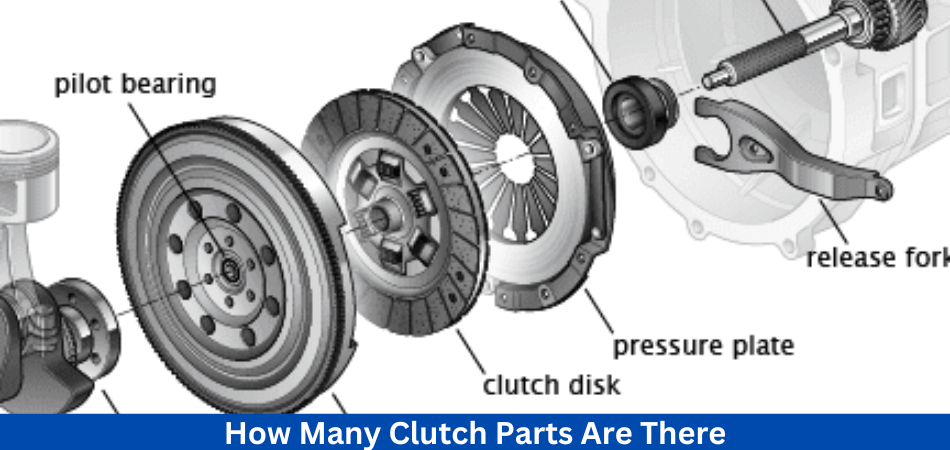
Driven Plate
The friction plate located between the pressure plate and the flywheel on a splined shaft. In a similar way to brake pads, it transmits power to the gearbox. The clutch can slip if these linings wear down too much, preventing it from re-engaging.
Pressure Plate
While the transmission engaged, this large ring applies pressure to the clutch plate. As a result, torque transferred from the engine to the transmission, keeping you moving smoothly.
Diaphragm Springs
In the clutch cover, you will find a large, round spring steel disc. When you depress the clutch pedal, the outer edge touches the pressure plate’s back, releasing the clamping pressure. During this process, the transmission disconnected from the wheels.
Release Bearing
This reduces friction between the pressure plate and release fork when it installed between the pressure plate and the clutch bearing. The release bearing slides along the transmission sleeve as the fork moves side to side.
What are the Types of Clutches?
1. Friction Clutch:
In passenger cars, this type of clutch is most common. It is composed of a single friction plate sandwiched between the flywheel and the pressure plate. The clutch pedal releases the friction plate from the flywheel, which allows the transmission to shift gears.
2. Centrifugal Clutch:
As engine speed increases, centrifugal clutches engage automatically, typically found on go-karts and lawn mowers. It is not necessary to use a pedal or lever to operate them.
3. Cone Clutch:
A cone clutch engages using friction surfaces that are conical in shape. They are often found in older vehicles and in some industrial settings.
4. Electromagnetic Clutch:
An electromagnetic coil engages and disengages these clutches. Often, they used in air conditioning compressors, power take-off units, and other applications that require remote or automatic control.
5. Hydraulic Clutch:
A hydraulic clutch transmits force from the clutch pedal to the clutch mechanism with the aid of hydraulic fluid. This type of engagement known for its smoothness and consistency. It is common for modern cars to use hydraulic clutches.
6. Dog Clutch:
In motorcycles and some sports cars, dog clutches are commonly used in manual transmissions. This type of gear has toothed gears that engage directly, allowing fast and precise shifting.
7. Semi-Automatic Clutch:
These systems combine the convenience of automatic transmissions with manual controls and are also called automated manual transmissions (AMTs). To shift gears, they use a computer-controlled clutch instead of a clutch pedal.
8. Dual-Clutch Transmission (DCT):
The DCT uses two clutches to handle odd and even gears separately. Often used in high-performance and modern sports cars, this enables extremely fast and smooth gear changes.
What is the M-Pact Clutch?
M-Pact Clutches are high-performance clutches that handle higher power than standard clutches. Designed to withstand high-speed driving conditions, it made from high-quality materials and can be used under a variety of conditions. With its unique design, the clutch provides increased grip and reduces the risk of slipping.
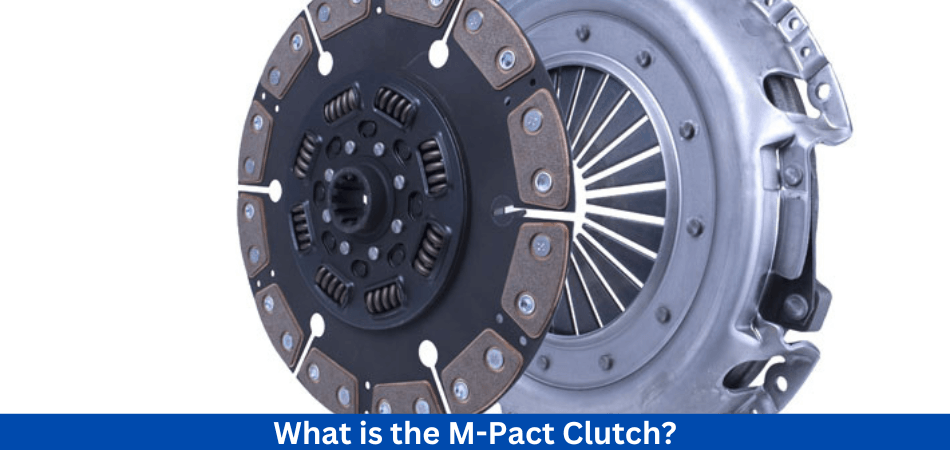
M-Pact Clutches transfer power from the engine to the transmission. In order to accomplish this, a clutch pedal to compress a set of plates. It helps to increase acceleration and top speed by transmitting engine power to the wheels.
M-Pact Clutch Review is very good compared to its competitors. But is it worth the money? Let’s find out.
What are the Specifications of the M-Pact Clutch?
- Quality, performance, and reliability are all hallmarks of the M-Pact stock replacement clutch kit. The clutch kits made up of matched components that result in a smoother, more consistent engagement.
- Unlike other clutch kits, M-Pact kits include a cover and disc assembly made of premium quality materials, a release bearing, a pilot bearing/bushing (if necessary), an alignment tool, and a lubricant.
- The M-Pact replacement kits built to perform and deliver quality. With a clutch kit, you get a smoother, more consistent engagement resulting from matched components.
- The part conforms to OEM specifications
- It includes a premium pressure plate, six-puck ceramic clutch plate, release bearing, top bearing/top bushing, alignment pin, and grease.
- Splines on clutch discs vary from model to model
- The diameter of clutch discs varies between models
What are the Types of M-Pact Upgrade Clutch Kit?
1 M-Pact ST1 Upgrade Clutch Kit
M-Pact ST1 Upgrade Clutch Kit features a high-torque steel back friction disc and matched pressure plate. Through the riveting of “steel to steel,” Some provide additional clamping force and superior burst strength.
With the reinforced steel backing, heat dissipated more efficiently, resulting in longer wear and quicker recovery.
High-torque M-Pact ST1 discs engineered with precision engineered components that provide increased horsepower. To ensure maximum strength and reliability, each disc equipped with a thicker retainer stamping and an increased hardness hub.
This assembly utilizes six inner and six outer heavy duty torsional dampening springs to minimize the shock of engagement. For stock or mildly modified applications, the M-Pact1 Clutch Kit Upgrade designed.
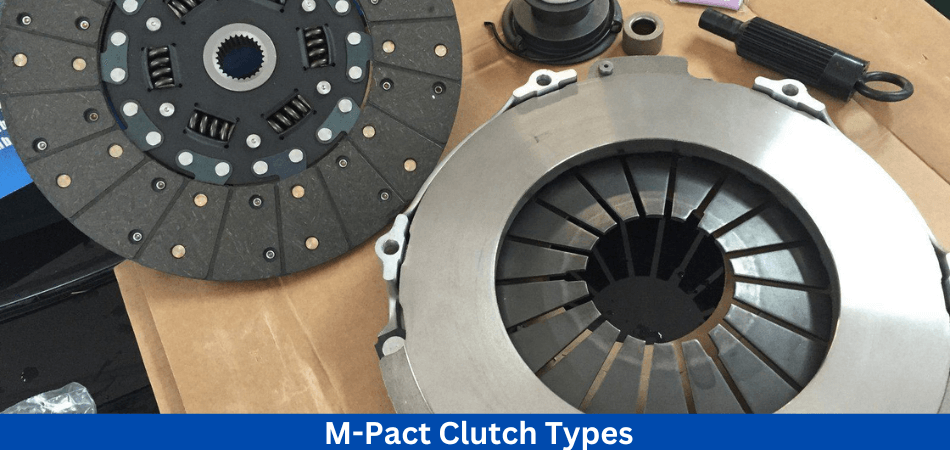
Features:
- An OE-quality pressure plate
- Assemblies with high-torque sprung hubs and discs
- Ceramic segmented friction with steel backing
2. M-Pact ST1.5 Upgrade Clutch Kit
Using a heavy-duty multi-fiction clutch disc, the M-Pact ST1.5 Upgrade Clutch Kit uses a matched pressure plate. Two different friction materials incorporated into the ST1.5 disc to maximize performance and drivability.
The flywheel side lined with steel to provide smooth engagement and reduce flywheel surface wear. Steel back lining provides better heat dissipation and increased burst strength.
The ST1.5 disc features segmented sintered ceramic facings on the pressure plate side. In this way, a ceramic facing friction material can found to deliver maximum holding, while at the same time a disc marcel produces a smoother engagement.
The precision-matched cover and disc combination provides improved holding capacity and drivability while offering street performance. Designed for moderately modified cars or simply aggressive people with stock power, the ST1.5 Clutch Kit Upgrade is the perfect upgrade for your car. Up to 40 percent more torque is available with this upgrade kit, while maintaining a stock pedal feel.
Features:
- Pressure plate of OE quality
- Assemblies with high torque sprung hubs and discs
- Ceramic segmented friction with steel backing
3. M-Pact ST2 Upgrade Clutch Kit
A matched pressure plate and a heavy-duty ceramic button clutch disc used in the M-Pact ST2 Upgrade Clutch Kit. ST2 discs lined exclusively with Carlisle (Wellman) sintered buttons. There are few companies in the world that can compete with Carlisle’s sintered friction technology and clutch buttons.
A number of precision-engineered components re used in the assembly of our ST2 high-torque discs, which designed for applications requiring increased horsepower. Strength and reliability enhanced by thicker retainer stampings and hardened hubs. The ST2 disc features a partially closed spring window that provides additional spring support and protection.
The sprung assembly construction dampens torsion vibrations for smooth engagement and operation. Most street performance enthusiasts will satisfied with the slightly aggressive engagement provided by the ceramic buttons on the ST2 clutch disc.
Modified vehicles or aggressive individuals with stock power can benefit from the M-Pact ST2 Clutch Kit Upgrade. It increases torque capacity by up to 25-50% while maintaining a stock pedal feel.
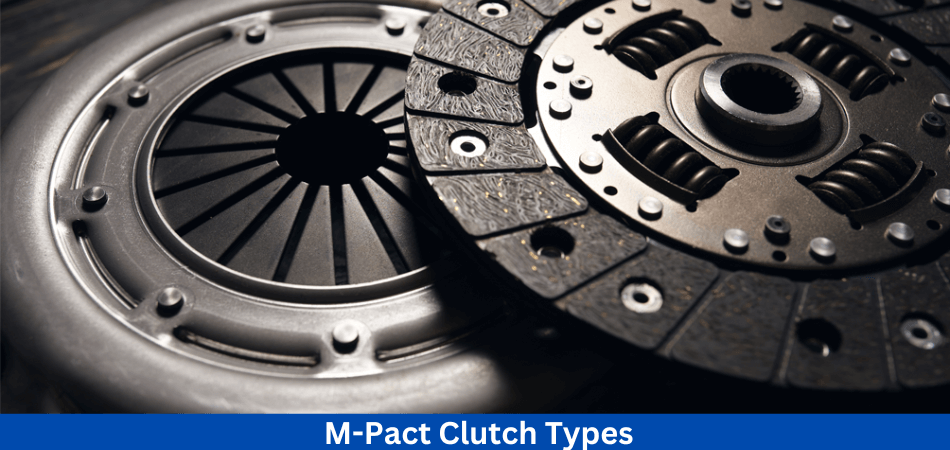
Features:
- A pressure plate of OE quality
- Assemblies with sprung hubs and discs that provide high torque
- Puck friction created by ceramics
What are the Pros of the M-Pact Clutch?
- M-Pact Clutch’s design allows it to handle more power than a standard clutch, which can improve the performance of your car.
- A high-quality clutch is more durable than a regular clutch because it made from high-quality materials.
- It offers increased grip and reduces the risk of slipping or burning thanks to its unique design. As a result, the driving experience becomes smoother and more enjoyable.
- Suitable for a variety of vehicles, the M-Pact Clutch can used in a range of driving conditions.
What are the Cons of the M-Pact Clutch?
Although M-Pact Clutch Review is quite good it still has some disadvantages, such as-
- It may not be affordable for everyone to purchase the M-Pact Clutch since it costs more than a standard clutch.
- The M-Pact Clutch has been reported to be noisy when engaged and disengaged by some users.
- M-Pact Clutch installation can be complex and may require professional assistance.
How Long Does A M-Pact Clutch Last?
In spite of the fact that these couplings are pretty hardy, smoking a clutch will reduce its lifespan. Even those who glued to the third pedal during easy cruising might see total failure within 20,000 or 30,000 miles of driving.
When the clutch fails completely, you won’t be able to operate your car, but there are warning signs before that. If the clutch doesn’t seem to clamp firmly against the flywheel at first, you may notice slippage.
When the clutch fails, you can expect symptoms such as laggy acceleration or inconsistent RPMs, even if you’re traveling at a steady speed.
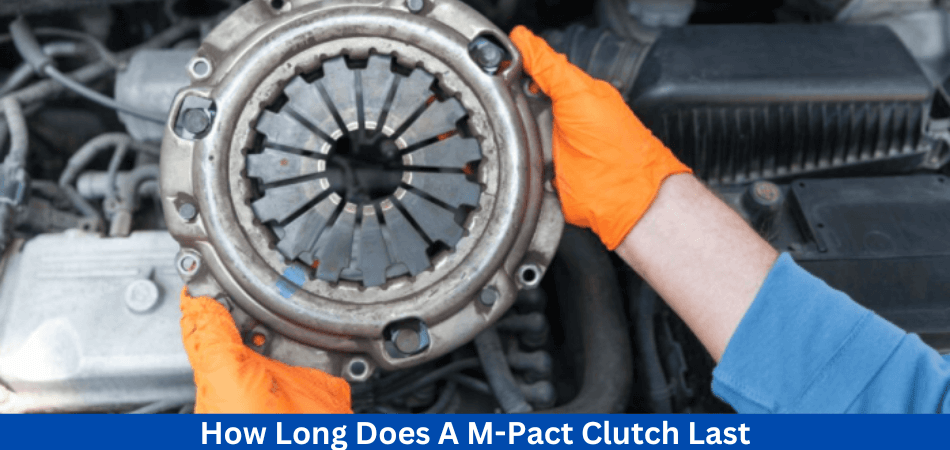
Symptoms of slippage become more apparent as the slippage worsens. It is likely that the clutch pedal will begin acting strangely at some point; it will likely become increasingly spongy in feel, and eventually, you will even notice a different engagement point – when the friction disc touches the flywheel during clutch depressing.
M-Pact Clutch Review is quite good and it lives it reputation. The friction material on the clutch disc will almost completely wear away if you ignore all the symptoms. There are usually two ways in which this manifests itself.
If you’re lucky, the clutch might fail while engaged. Depressing the clutch pedal will not decouple your transmission from the flywheel when this happens. You will have to float shift or shift without a clutch in order to change gears: the car is technically driveable, but changing gears won’t be easy. Unless you have access to a repair shop, you won’t be able to drive anywhere except there.
What are the Common M-Pact Clutch Problems?
Although the M-Pact Clutch Review is good yet it has some problems. It’s possible to get up to 80,000 miles from your clutch, according to AAMCO, but you’ll need to treat it right. The following are some of the most common clutch problems:
Wear: Wearing out your clutch caused by constant friction.
Broken cable: Pushing and pulling the cable requires too much tension.
Leaks: The clutch will not operate properly if the fluid leaks from the cylinders.
Misalignment: When you press the clutch or gas pedal, the wrong amount of force transmitted.
Air in the line: You will not be able to get the pressure in the system to work properly if air gets in the line where fluid needs to be.
Hard clutch: When you have to apply a lot of force to get your clutch to work, this could indicate that there is a problem.
Conclusion: M-Pact Clutch Review
So you have learned about the clutch through this M-Pact Clutch Review. M-Pact Clutches are top-quality products that provide a range of benefits to car enthusiasts. Because it can handle more power than a standard clutch, it is recommended for those who wish to improve their car’s performance.
Also, it offers a smoother engagement than standard clutches, making it a great choice for those who want a better overall driving experience.
Nevertheless, you should consider the cost of the M-Pact Clutch, as well as the potential noise and installation issues. An M-Pact Clutch is definitely worth considering if you are looking for a high-performance clutch.
Read more of our articles here.
FAQs
What types of vehicles are compatible with the M-Pact Clutch?
It can be used in a variety of driving conditions, making it suitable for a wide range of vehicles.
Is it possible to install the M-Pact Clutch myself?
M-Pact Clutch installation can be complex, and it may require professional assistance.
Does the M-Pact Clutch make a lot of noise?
There have been reports that the M-Pact Clutch can be noisy when engaged and disengaged.
What is the price of the M-Pact Clutch?
Compared to a standard clutch, the M-Pact Clutch is more expensive.
For what types of driving conditions is the M-Pact Clutch suitable?
High-speed driving and racing are high-stress driving conditions that the M-Pact Clutch is designed for. Typical driving conditions can also be met with it.
Is the M-Pact Clutch capable of improving fuel efficiency?
M-Pact Clutches are designed to handle more power than standard clutches, but they do not necessarily improve fuel efficiency. Fuel efficiency can be indirectly improved by improving the performance of your car by allowing the engine to work more efficiently.
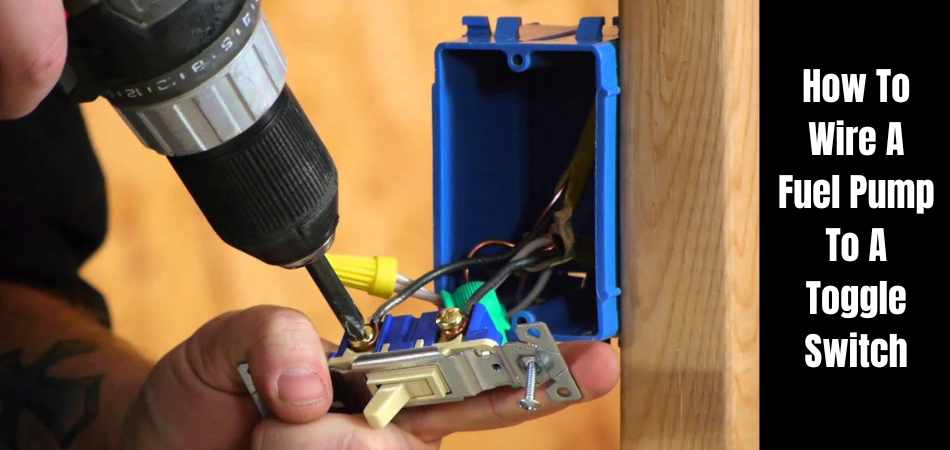
The number of car thefts increased tremendously in these years. One of the best ways to deter automobile thieves is to learn how to wire an electric fuel pump to a toggle switch. If you use this simple system, your fuel pump will be shut off, making it impossible for someone to steal your car. So, How To Wire A Fuel Pump To A Toggle Switch?
The toggle switch allows you to easily control your fuel pump’s operation with just a switch flip. The fuel system of your vehicle is not only more secure and safe due to this feature, but it also provides added convenience. Our fuel pump toggle switch wiring guide is your one-stop shop for convenient and effective fuel pump wiring.
Read the article to learn more about How To Wire A Fuel Pump To A Toggle Switch.
What is a Toggle Switch?
A toggle switch operates by pushing a lever up and down or left and right to switch an electrical circuit. The toggle is a small wooden rod that replaces buttons as a clothing fastener. Due to the resemblance between the switch lever and the toggle used in clothing, the term “toggle switch” was coined.
What are the Types of Toggle Switch?
There are four types of these switches, each with a different combination of poles and throws, such as SPDT, SPST, DPDT, and DPST. A switch’s poles are typically the individual power supplies, whereas its throws are the different locations the switch can control, such as ON and OFF.
1. SPST Toggle Switch
An SPST is a “Single Pole Single Throw” circuit, which includes two terminals, like input and output. Switches like these work like simple ON/OFF switches. In a single branch circuit, this switch makes or breaks a connection between two conductors.
By opening this switch, the circuit will be disconnected, preventing current from flowing through the load. When the switch is closed, current flows throughout the load.
2. SPDT Toggle Switch
A SPDT toggle switch is one that can make or break a connection between two single conductors. SPDT stands for “Single Pole Double Throw”. There are usually three terminals on these types of switches, which are generally used in pairs.
3. DPST Toggle Switch
The DPST switch is used to make or break the connection between two circuit conductors within one branch circuit. DPST stands for double-pile single throw. In general, these switches include four terminals that can be used to connect or disconnect two pairs of terminals at the same time.
4. DPDT Toggle Switch
A DPDT toggle switch is a toggle switch that makes or breaks the connection between two conductors to two separate circuits. The term DPDT stands for double pole double throw. Three and four of these switches are powered, while the remaining terminals, like 1, 5, 2, and 6, are driven by the remaining terminals. Four-way switches are also known as four-position switches.
5. LED Toggle Switch
A LED is usually mounted on the tip of these toggle switches. In this LED, the switch condition is mainly indicated, such as ON/OFF. In handheld devices, as well as front-panel interfaces, these switches are used.
6. Mini Toggle Switch
Switch with mini toggle available in smaller sizes which are also called snap-action switches or micros switches. Switches with spring-loaded toggles respond to some force applied to them. Through current inflow, the switch’s spring activates & shifts the contacts into place. As well as being used in domestic and industrial equipment, these switches are designed to be used extensively in a wide range of applications.
What is the Structure of a Toggle Switch?
Construction
As parts of a toggle switch, levers, springs, o-rings, plungers, moving armatures, cases, and bases can be used.
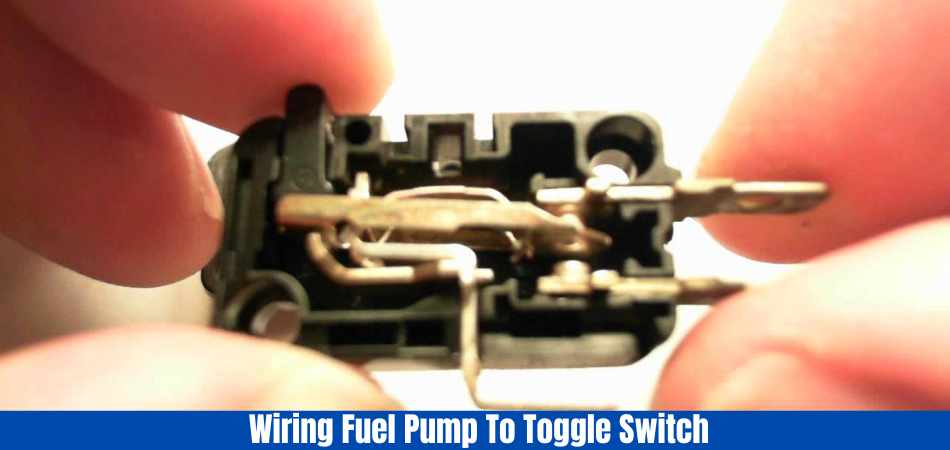
Lever
The lever is available on top of a switch which is used to control the circuit by turning ON & OFF. In general, these are made of resin, though metal can be used on larger items for extra strength.
Spring
A spring loaded within the lever of the switch. There is always a contact between the lever and the base due to this spring pushing outwards on the lever.
O-ring
There is a circular rubber ring in the switch that seals the connections between the case, base, and moving parts.
Plunger
An electrical switch’s plunger is a resin component attached to the lever’s base. Lever movement can limited by having the lever in contact with the bottom of the base at all times.
Moving Armature
The lever’s moving armature consists of a U-shaped contact. In order to turn on the condition of the switch mechanism, the wire terminal positioned in between the tips of the contact that moves through the lever.
Case
By having a hole on the upper surface, the case provides support to the lever and protects the internal components of the switch.
Base
To protect the inside components of the switch, the base used with the case. From the bottom of the base, the switch terminals protrude.
What is the Major Function of A Toggle Switch?
For a fuel pump to work, a toggle switch is crucial. Fuel pump activation and deactivation are conveniently and reliably accomplished with this small yet powerful device.
The toggle switch acts as an intermediary between the power source and the fuel pump when it comes to fuel pump functionality. It enables the fuel pump to deliver fuel to the engine by allowing electrical current to flow through the switch.
For vehicles and machinery that rely on fuel pumps, toggle switches serve as an essential safety feature. The fuel pump can effectively shut down during emergencies or routine maintenance by tripping the switch.
Moreover, toggle switches are durable and easy to operate. Users can quickly turn them on or off with a quick movement thanks to their simple mechanism. As a result, they are handy for controlling various functions within vehicles and equipment.
Fuel pumps controlled by toggle switches, which act as essential control components. Providing efficient fuel delivery is an essential part of any system due to its reliability, convenience, and safety features.
What are the Tools Required To Wire A Fuel Pump To A Toggle Switch?
- Single post relay
- Inline fuse
- Digital Multimeter
- Wire strippers
- A kill switch kit
Tip: Hide your kill switch to prevent your fuel pump from being stolen by auto thieves.
How To Wire A Fuel Pump To A Toggle Switch? Step-By-Step Guide!
Generally, here’s how you wire a toggle switch to a fuel pump:
- Find and access the components and wiring of your fuel pump. Fuel pumps should be checked for power.
- The fuel pump cutoff switch should be connected to the fuel pump.
- You should cut and splice the fuel pump wire. When necessary, your kill switch cuts electricity to your pump to protect your car wiring.
The steps for wiring an electric fuel pump to a toggle switch are fairly straightforward, and we will explain them below.
Step 1: Find your fuel pump and access it
Locate the electric fuel pump on your vehicle. You are most likely to find it in your fuel tank. Remove the filler cap from the fuel tank and place your ear near the nozzle. It is essential that someone turns the ignition key from the off position to the power position.
It takes two or three seconds for the gasoline pump to click or buzz after it is turned on. You can find the pump by tracing the fuel line from the tank to the engine if you are sure it isn’t inside the tank.
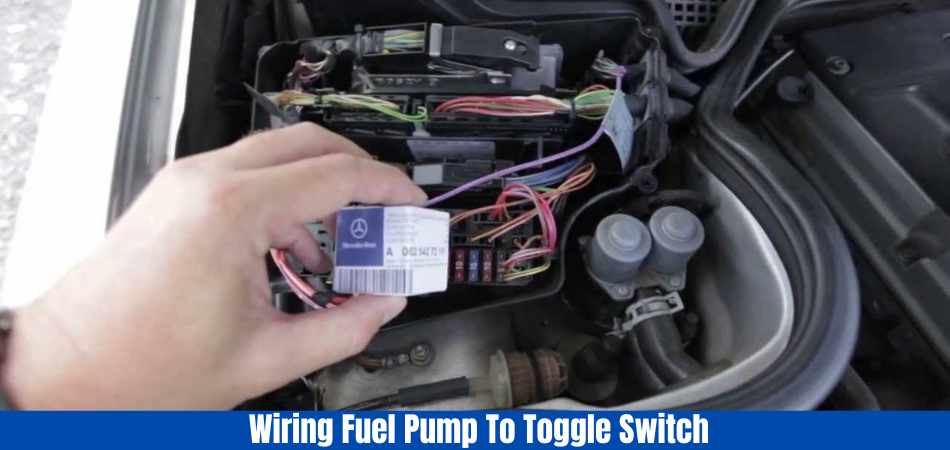
Make sure you can access your fuel pump component and wiring. Your fuel pump may need to be accessed through your trunk or dismantled, depending on your application. No matter how you get to the gasoline pump assembly, it doesn’t matter.
The connector needs to be accessible; then, the connections must be stripped and cut.
Step 2: Check the fuel pump’s power
Your digital multimeter should be used to check the voltage. Check for switched current by grounding the black lead of your multimeter after unplugging the fuel pump harness. For this to work, your ignition must be turned on.
Check if the cables can be routed through the floor of the car to the outside. In case a hole needs to be drilled, drill it. Ensure that there is enough space underneath the switch assembly for the wiring and switch assembly.
Step 3: Connect your fuel pump kill switch
The switch should be installed in the desired location. Install the switch from the back and tighten the ring nut on the outer side of the switch body. On and off positions should be oriented correctly; for example, up is on, and down is off.
When you have purchased a complete kill switch kit, this phase is simple and uncomplicated. By following the circuit diagram for the fuel pump kill switch shown below, you can connect your fuel pump kill switch using a common single post automotive relay.
In the above figure, you can see how to modify a standard automobile relay to serve as a fuel pump kill switch. Upon completion of the installation of your kill switch, you will be able to turn off your gasoline pump at any time.
You can then hide or stash the gasoline pump kill switch so that thieves cannot find it.
Step 4: Turn off your fuel pump’s power line
The fuel pump components should trimmed and spliced according to the wiring diagram above. The single post relay and kill switch protect your car wiring and shut off the electricity to your pump when you need them to.
Make sure your wiring checked after installing your fuel pump kill switch to prevent your pump from turning off by itself.
It is highly recommended that you solder your connections, even though you can use fast electrical connectors.
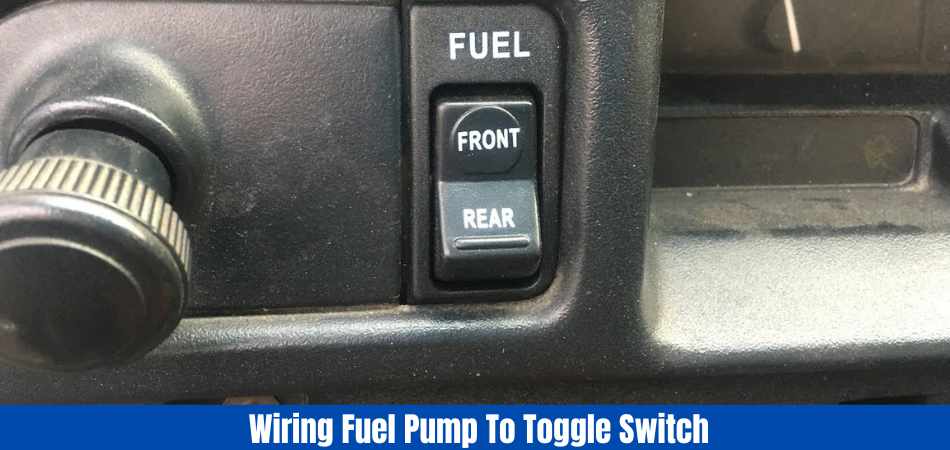
When installing a gasoline pump kill switch, never access the fuel pump component. It can hazardous to work in an environment that is filled with gas vapors or fumes.
Learn more about it here.
4 Essential Tips To Wire A Fuel Pump To A Toggle Switch
There are a few crucial considerations to keep in mind when implementing this anti-theft strategy. The following are just a few of them:
Tip 1: Keep a relay handy at all times
Installing a kill switch and leaving it alone not recommended. There are many three-prong toggle switches that lack the necessary amp capacity, resulting in electrical problems.
It is possible for these issues to cause your switch to melt or even catch fire. Always use an automotive relay and a kill switch that appropriately rated rather than taking chances.
Tip 2: Put an inline fuse in place
In case of an electrical disaster, an inline fuse is crucial for keeping your power cable safe.
Tip 3: Choose the right wire gauge
Make sure the automotive wire is strong enough to handle the voltage. A thinner wire might be unable to transmit voltage securely, resulting in an electrical fire.
Tip 4: Hide your fuel pump kill switch
In the event that the kill switch placed in an easily accessible location, your installation will be rendered useless. Your switch should mounted or hidden somewhere safe and only accessible to you.
What are the Advantages of Wiring A Fuel Pump To A Toggle Switch?
A toggle switch can used to connect a fuel pump to a number of benefits and advantages. Toggle switches allow you to control the fuel pump’s operation, allowing you to turn it on and off as needed.
During maintenance or troubleshooting, this is particularly useful for controlling fuel flow directly.
You can also add an additional layer of security to your fuel pump by installing a toggle switch. A manual switch that disables the fuel pump allows you to prevent unauthorized use or theft of your vehicle.
It is also possible to wire a fuel pump to a toggle switch at a fairly low cost. The cost of replacing faulty or malfunctioning factory switches may be high or require complex repairs in some cases. Toggle switches can eliminate these issues and provide you with an easy-to-use alternative.
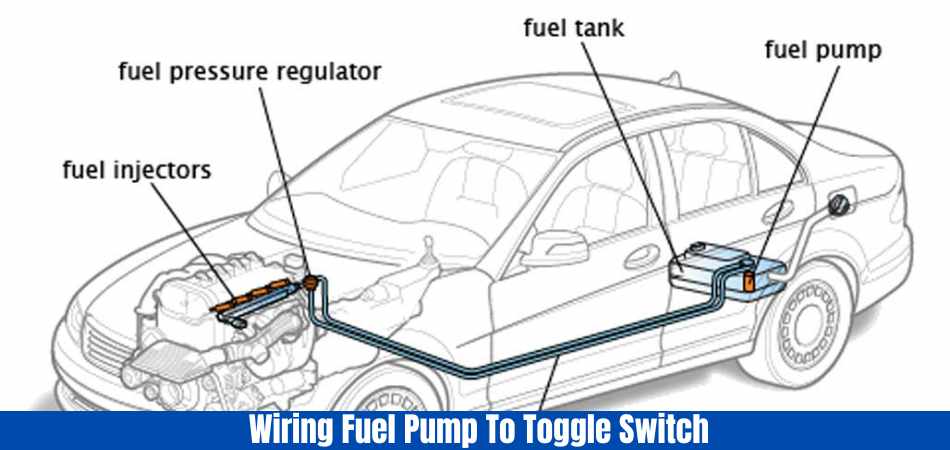
In order to ensure the safety of any electrical component in your vehicle, it is important to take the proper precautions and to consult professional guidance. By ensuring that the wiring performed correctly and safely, any potential hazards or damages can be avoided.
The toggle switch provides convenience, security, and cost-effectiveness when wiring your fuel pump. The device gives you direct control over fuel flow while adding an extra layer of protection to your vehicle.
What are the Disadvantages of Wiring A Fuel Pump To A Toggle Switch?
Fuel pumps can be wired to toggle switches, but there are several disadvantages to consider.
The first disadvantage is that you eliminate essential safety features that have been introduced into the vehicle’s electrical system. when you bypass the original wiring system and connect the fuel pump directly to the toggle switch. Fuse and circuit breakers are safety features that prevent electrical malfunctions and fires.
Additionally, wiring a fuel pump to a toggle switch increases the risk of accidental fuel leakage or ignition. For optimal engine performance and safety, the original wiring system ensures proper fuel flow and pressure regulation.
You can inadvertently damage the engine or create dangerous situations by circumventing this system.
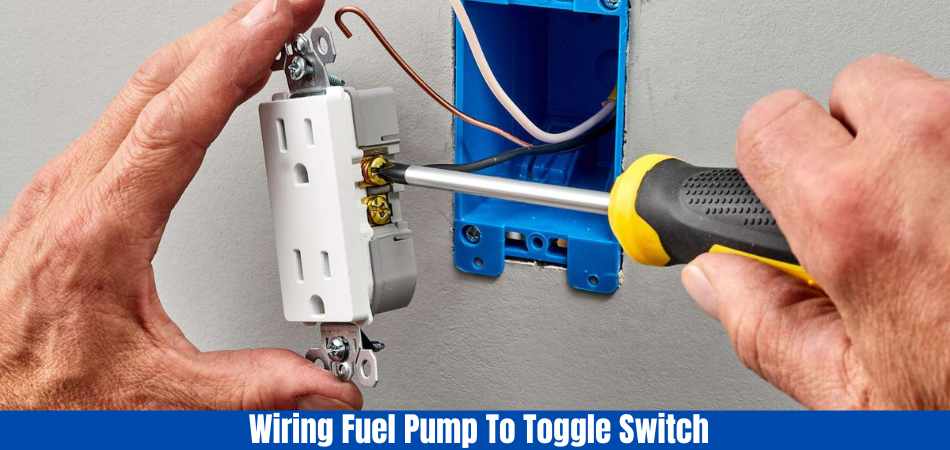
In addition, if you use a toggle switch instead of the ignition switch or key, you remove an additional layer of security. By accessing the toggle switch, anyone could start or stop the fuel pump without authorization.
In addition, you may lose any warranty or insurance coverage you have if you modify your vehicle’s electrical system in this way. Any modifications to your vehicle that could impact its safety or functionality should be discussed with a professional mechanic or automotive electrician.
Despite the convenience of wiring a fuel pump directly to a toggle switch, there are potential disadvantages and risks associated with this practice. When working with automotive electrical systems, safety should always be the top priority.
What are the Precautions of Wiring A Fuel Pump To A Toggle Switch?
It is essential to take several precautions when wiring a fuel pump to a toggle switch. Working with any electrical component, especially those related to fuel systems, should always be done safely.
To begin with, make sure that the toggle switch rated for the fuel pump’s voltage and current requirements. Short circuits, overheating, or fire can result from an undersized or incompatible switch.
It is also essential to follow proper wiring techniques. In addition to using the correct gauge of wire, it is important to ensure that all connections are secure and insulated. Electrical malfunctions or hazards may occur if exposed wires or loose connections are present.
In addition, the toggle switch and fuel pump wiring must protected by a fuse or circuit breaker. Components will be protected against overcurrent situations, and damage will be prevented.
Lastly, when it comes to such wiring tasks, it is highly recommended to consult with a professional or experienced individual. Depending on the make and model of your vehicle, they can provide advice on following all safety protocols.
By following these precautions, you will minimize the threat of electrical faults and ensure your vehicle’s fuel system runs safely.
Conclusion
Safety should always be a top priority. Make sure to disconnect the vehicle’s battery, carefully follow all instructions, use the appropriate tools and components, and, if in doubt, seek professional help. Fuel pump safety and reliability depend on the correct installation and operation of the toggle switch.
You should also consider any legal requirements or regulations applicable to your region when modifying your vehicle’s fuel pump wiring. It is essential to comply with local laws and regulations in order to avoid any legal issues. Using the correct knowledge, safety measures, and legal standards, you can confidently perform this modification and enjoy the benefits of a manually controlled fuel pump.
Read more of our articles here.
FAQs
Can a fuel pump be wired to a toggle switch safely?
The quality of the wiring determines the safety of the installation. Following safety guidelines and doing it correctly can make it safe. Nevertheless, improper wiring can be dangerous. Follow safety precautions and understand the process.
Are there any special tools or equipment I need to wire a fuel pump to a toggle switch?
Wire strippers, crimping tools, electrical tape, and a toggle switch are all basic electrical tools you’ll need. A wiring diagram your specific vehicle may also be required.
Is it possible to install a toggle switch for my fuel pump in any vehicle?
It is possible to install a toggle switch for the fuel pump on most vehicles. It’s important to consult your vehicle’s service manual or seek professional assistance if you are unsure about the wiring and where the fuel pump is located.
Can you tell me what type of toggle switch I should use?
Toggle switches designed for automotive applications should be high-quality. Make sure it can handle the electrical load of the fuel pump and has an appropriate amperage and voltage rating.
What is the best place to install the toggle switch?
Toggle switches should be installed in a location that is easily accessible but not prone to accidental activation. In addition, it should mounted securely and in a way that does not interfere with the vehicle’s operation.

As a fascinating aspect of the automotive world, rare Honda colors offer enthusiasts and collectors a variety of options for expressing their individuality and appreciation for fine craftsmanship. Honda has used these limited-production hues on various models over the years, leaving an indelible mark on the brand’s history.
Over the years, Honda has offered rare paint finishes and color options for its vehicles. There is usually limited production of these colors, so they are not commonly seen on the road.
It is important to remember that Honda’s color options can change from year to year and that the rarity of a particular color may vary by model and region.
Let’s learn more about rare Honda colors from this article.
How Do You Find Your Honda Paint Code?
The process of finding your Honda color code is much simpler than you might think. Honda’s codes are located in the same place regardless of the model, unlike many car brands that place them in different places. You’ll find the code inside the engine compartment of the Honda Accord, Jazz, Honda CRV, Honda FRV, and Honda S2000 Stream Civic models. The code can be found on the column/post of the driver-side door for Civic, Insight, Logo, S2000, and NSX models.
There are typically five or six letters and numbers in Honda paint codes. In Honda Acura models from 2001-2021, B506M is the code for Ice Blue Metallic paint, and R513-4 is Liberty Rally Red paint.
Unlike other Honda models, the CR-V 2021 will have 8 brand-new paint schemes available across the LX, EX, EX-L, and Touring models. There will be the following colors:
- Social Gray Pearl
- Aegean Blue Metallic
- Crystal Black Pearl
- Lunar Silver Metallic
- Modern Steel Metallic
- Obsidian Blue Pearl
- Platinum White Pearl
- Radiant Red Metallic
You can try asking the manufacturers directly for your paint code if you have trouble finding it.
What are the Rare Honda Colors Available in the Market?
Here are some examples of rare Honda colors:
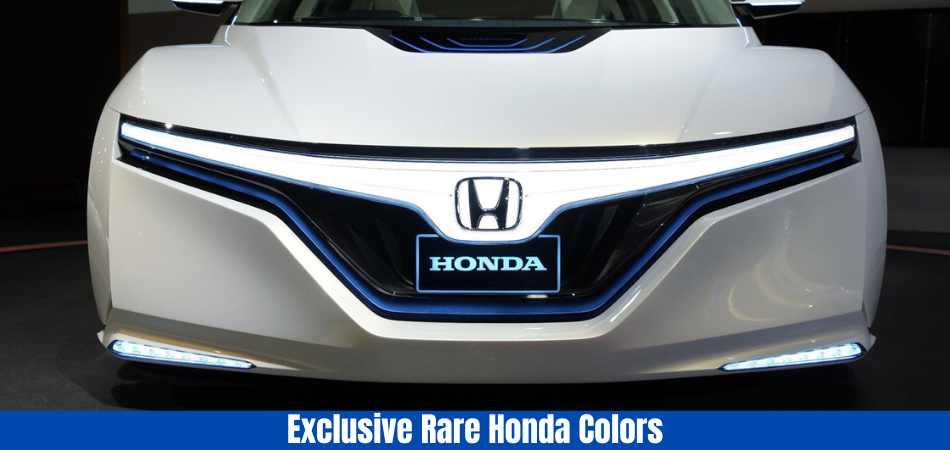
- Championship White: Honda’s high-performance cars, such as the Civic Type R and the NSX, are known for their legendary color. Bright white is a color associated with racing.
- Phoenix Yellow: The Honda S2000 and some Type R variants have come in Phoenix Yellow, a vibrant and eye-catching color.
- Sonic Blue Pearl: Honda has used this shade of blue on some of its models, like the Civic Si, and it is known for giving the car a unique and striking look.
- Electron Blue Pearl: In addition to Acura Integra Type R and Honda Civic models, Electron Blue is another eye-catching color.
- Rio Yellow Pearl: Honda S2000 models come in this sunny yellow color, which adds a sporty and playful touch to the vehicle.
- Taffeta White: Despite not being a rare color, Taffeta White was a popular choice for the Honda Civic Si due to its elegant and timeless appearance.
- Frost White: In the past, Honda models have used Frost White, which is known for its cool, icy appearance.
- Orange Fire Pearl: Fire Pearl Orange color has been offered on models like the Honda Fit and adds a vibrant touch to the vehicle’s exterior.
- Flamenco Black Pearl: Some Honda and Acura models had this deep, almost black paint with hints of red, giving the vehicle a luxurious and mysterious appearance.
- Magnesium Metallic: A silvery-gray color that adds sophistication to Honda’s sportier models.
What are the Rare Colors Available for Honda Models?
1. Honda Civic Colors
Honda Civics have been best-sellers for decades due to their exceptional efficiency, comfortable performance, and stylish design. Numerous colors are available in a variety of models today so that you can set yourself apart from the crowd. The following are the basic sedan and hatchback colors, complemented by a black cloth interior:
- Crystal Black Pearl
- Modern Steel Metallic
- Polished Metal Metallic (hatchback)
- Lunar Silver Metallic
- Platinum White Pearl
- White Orchid (hatchback)
- Aegean Blue Metallic (hatchback)
- Rallye Red (hatchback)
- Sonic Gray Pearl (hatchback)
Other Honda Model Colors
Other Honda model colors add a little variety to the lineup, including Crystal Black and Platinum White.
- In the Honda Accord, you can choose between Radiant Red Metallic and Champagne Frost, with black or gray cloth interiors.
- The Honda Pilot is available in Steel Sapphire, Black Forest Pearl, Deep Scarlet Pearl, and gray cloth interior.
- The Honda Odyssey is available in White Diamond Pearl, Obsidian Blue Pearl, and gray cloth.
2. Honda Accord Exterior Colors
There are several versatile trim levels in the 2023 Honda Accord lineup. You have a limited choice of colors for your Accord, depending on which one you choose.
Additionally, the Honda Accord’s exterior colors are grouped into standard colors and premium colors, with the premium colors costing more. Below, you’ll find paint colors and trim levels available in them:
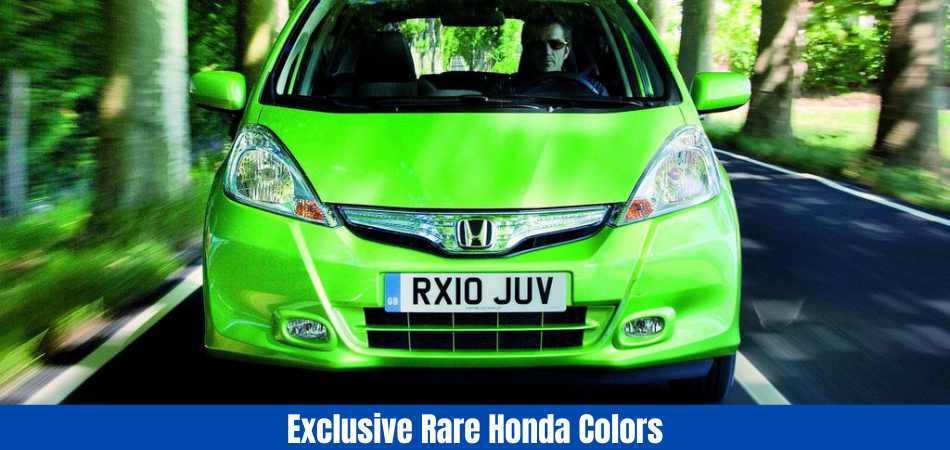
- Metiorite Gray Metallic (Available on LX, EX, EX-L Hybrid, Touring Hybrid trims.)
- Canyon River Blue Metallic (Available on EX, EX-L Hybrid, Touring Hybrid trims.)
- Crystal Black Pearl (Available on LX, EX, Sport Hybrid, EX-L Hybrid, Sport-L Hybrid, Touring Hybrid trims.)
- Lunar Silver Metallic (Available on LX, EX, Sport Hybrid, EX-L Hybrid, Sport-L Hybrid, Touring Hybrid trims.)
- Platinum White Pearl (Available on LX, EX, Sport Hybrid, EX-L Hybrid, Sport-L Hybrid, Touring Hybrid trims)
- Radiant Red Metallic (Available on LX, EX, Sport Hybrid, EX-L Hybrid, Sport-L Hybrid, Touring Hybrid trims.)
- Still Night Pearl (Available on Sport Hybrid, Sport-L Hybrid trims.)
- Urban Gray Pearl (Available on Sport Hybrid, EX-L Hybrid, Sport-L Hybrid, Touring Hybrid trims.)
Honda Accord Interior Colors
With the Honda Accord interior colors, Honda keeps it simple. Black or Gray interiors with cloth or leather-trimmed seats are available for the 2023 model. With the new Accord, you can choose from a dark and durable interior or a soft leather interior that envelops you in luxury.
3. Honda CR-V
Considering the amount of available and standard features of the Honda CR-V, calling it stacked may be unfair. As part of Honda Sensing®, you’ll find Lane Keeping Assist System, Collision Mitigation Braking system, Traffic Sign Recognition, Road Departure Mitigation System, and Adaptive Cruise Control.
A Bose Premium Sound System, optional 9-inch touch-screen, and wireless smartphone compatibility features are all available inside the 2023 Honda CR-V. With a gas-powered 190-HP engine or a hybrid powertrain under the hood, the 2023 Honda CR-V is ready for practically anything.
- Paint Colors for the 2023 Honda CR-V
- Canyon River Blue Metallic
- Crystal Black Pearl
- Lunar Silver Metallic
- Meterorite Gray Metallic
- Platinum White Pearl
- Radiant Red Metallic
- Still Night Pearl
- Urban Gray Pearl
4. Honda Pilot: Diffused Sky Pearl
The Honda Pilot doesn’t have a color on this list either, so we weren’t expecting it. However, what are we supposed to say? Blue is one of our favorite colors. Diffused Sky Pearl is only available in the Pilot’s off-road-oriented TrailSport trim, giving it a unique flair not found in many of its three-row competitors.
4. Honda Civic Si: Blazing Orange Pearl
Blazing Orange Pearl paint is one of our favorites on the latest Honda Civic Si. Even our long-term 2022 Civic Si is finished in color. We love this color even more after spending so much time with our Civic Si, which manages to match Honda’s compact sports sedan’s sporty, but not over the top, vibes.

What are the Factors that Can Influence Your Rare Honda Colors Choice?
It can be challenging to choose the right Rare Honda Colors, however. Several factors, including aesthetics, maintenance, and resale value, influence the color you choose for your car.
To determine the best car colors, let’s examine some of these factors.
1. Personal Taste
One of the most important factors in choosing a car color is the buyer’s personal preference.
People’s color preferences often reflect their personalities. Colors that attract attention, such as yellow, red, or green, are preferred by individuals who wish to stand out. It may appeal to those who wish to simplify their lives to choose white, silver, gray, or black as their colors.
When you choose a color you admire, you will be more satisfied with your ownership experience. A car that comes in a color you like will make you happier.
2. Maintenance
It may be difficult to maintain the color of your car. Black and red, in addition to pearl hues, require careful maintenance since scratches, grime, and dirt are easily visible.
The easiest colors to keep clean are white, gray, and silver. Dark colors tend to show dirt more readily than lighter colors. The appearance of darker colors requires more effort. It will take longer to polish body panels with a deeper color because you will notice more scratches.
The darker the metallic hue, the more likely it is to wear and require more maintenance. In spite of this, they are most eye-catching when they are properly maintained.
3. Heat Absorption
Heat is easily conducted through metal. It will be absorbed more readily by a dark-colored car. The darker the color, the more heat it absorbs. Heat is absorbed more readily by dark-colored cars, which makes them hotter. Lighter colors, however, reflect heat well.
4. Cost
It is not uncommon for car manufacturers to offer models in specific colors at an additional cost. The Pearl White color of Toyota is typically more expensive than other colors. Likewise, Mazda’s flagship Soul Red Crystal and Machine Gray colors are more expensive. Getting branded car colors is more expensive.
5. Resale Value
Cars can be sold for more or less based on their color. It is common for buyers to choose cars in white, black, gray, or silver due to their greater value retention. Having a flashier color on your car may make selling it more difficult.
Insurance premiums are commonly inflated by bright colors such as red. The truth, however, is quite different. Insurance rates are not affected by the color of a car. It is only the make, model, and cost of repairing and replacing your vehicle that insurance companies care about.
What Makes a Rare Honda Car Color Safe or Dangerous?
Color matters more than just aesthetics when choosing a car. Monash University’s Accident Research Centre found that car color influences how likely you are to get into an accident and that the data is more than just anecdotal.

Researchers used data from 855,258 accidents in Australia between 1987 and 2004 to determine the color that was the safest and the most dangerous. Color can play a role in an accident’s likelihood for a number of reasons. When deciding whether to buy a car, knowing what they are can help.
1. Visibility
One of the most important factors that contribute to a higher crash risk is the visibility of a certain color. When driving a white or yellow car, other drivers can easily spot you because they stand out against the road and its surroundings.
The light color of the car will also make it easier to see at night and will reflect the available light more efficiently. As a result of this extra visibility, these cars are much safer, especially in low-light conditions.
2. Behavior of Drivers
It is always going to be the other cars on the road that pose the greatest danger to you when you are driving. It turns out that certain car colors can affect how other drivers perceive you, making them more dangerous than others.
French researchers found that red cars triggered more aggressive driving among other drivers in 2012. Therefore, if you have a red car, you might be more likely to be the target of road rage or other aggressive behaviors from other drivers.
3. Maintenance
Keeping your car in good condition is more likely if you love it. Whites and creams are brighter, cleaner-looking colors that are almost always in better shape than dark colors.
Additionally, bright colors are more likely to show dirt and damage, which can indicate more serious mechanical issues. An accident is much less likely to happen to a well-maintained car.
Does Rare Honda Colors Matter With Resale?
To understand why colors matter, we must first determine why they are important. When purchasing a used car, do people consider its color? That’s a definite yes. If the color of the car is too “trendy” or “bold,” buyers may pass on it in favor of something more neutral. In terms of resale value, bold and bright colors tend to appeal to fewer buyers.
In addition, car colors that are on trend this year may not be in 3-5 years when you’re ready to sell. There isn’t as much demand for some previously popular vehicle colors, which is why some colors lose their value more quickly.
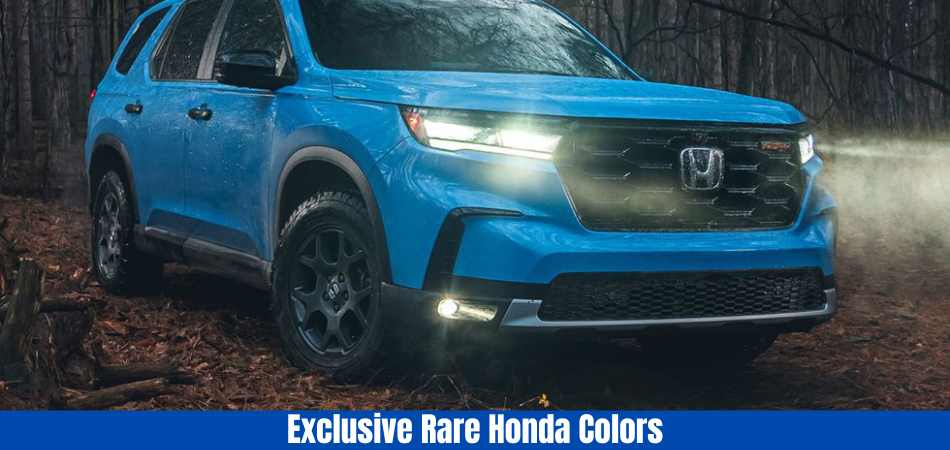
Here are the top car colors with high resale value if maintaining resale value or trade-in value is important to you. Next, we will look at car colors that have lower resale values and what to do about vehicles with unique colors.
1. Gray
Across all vehicle segments, gray is one of the most popular vehicle colors. In addition to being predictable, timeless, and non-depreciating, it doesn’t add to vehicle depreciation. Among SUVs and pickup trucks, minivans, and sedans, gray is the most popular color, according to Kelley Blue Book.
It is also easier to keep gray-colored vehicles clean. On gray cars, dirt doesn’t show up as clearly.
2. White
Despite being more difficult to clean, white cars are still a popular color for resale value. No vehicle doesn’t look good in white, even if it’s a luxury model. Minivans are most often painted white, according to Kelley Blue Book.
Resale value is maintained by white cars because they are easy to see on the road.
3. Black
The color black is another one you’ll see across all segments of vehicles. Colors like this are always in style and give a sleek exterior. The color black is very popular for luxury vehicles. In addition to hiding dirt and dust, black cars tend to show other particles like pollen more clearly.
Despite that, studies have shown that black vehicles don’t depreciate, so you shouldn’t rule them out.
4. Silver
As with gray, silver is one of the top car colors when it comes to resale value. In addition, it doesn’t impact the resale value of your car, which makes it a good choice for any vehicle.
All around, Kelley Blue Book ranks silver in the top 5 colors for most vehicle segments. In addition, it is simple to clean, which adds to its appeal.
5. Blue
After neutral colors, blue is the top color for resale value. Each car manufacturer has its shade of blue, ranging from dark to light, but in general, they are all grouped in the blue category. When it comes to adding some color while maintaining a relatively simple look, blue is a popular choice.
According to a recent study, blue vehicles depreciate less than neutral-colored vehicles. You should choose blue if you are concerned about resale value.
6. Red
The last but not the least is red. Another popular color is red, which comes in a variety of shades and tints. Reds can be candy apple reds, dark cabernet reds, or anything in between. In general, red cars tend to hold their value for a longer period than black, white, and gray ones.
Also, it looks good on sedans, SUVs, minivans, and pickups. Those looking for cars for sale in red may be attracted to the color because it adds personality without being too flashy.
Car Colors With Low Resale Value
Are there car colors that intentionally lower the resale value of a car based on the top colors for resale in value? According to recent studies, this is true. In contrast to other colors, gold and brown cars depreciate faster.
It could be due to a number of factors. First of all, car brands don’t release cars in gold and brown anymore, so used cars in these colors are less common. Although these colors are uncommon, car buyers aren’t in a rush to purchase them. Consequently, these colored cars aren’t as valuable as other popular colors when you combine low demand with rarity.
Orange, beige, and green are also among the least popular car colors, according to Kelley Blue Book. For each type of vehicle, these colors ranked at the bottom. Consider this if you are thinking about buying a vehicle in one of these colors and want to sell it later on. They may not appeal to the majority of buyers.
Can Rare Honda Colors Still Sell?
Now, if you have your heart set on a two-tone compact SUV or a bright yellow car, you may be asking yourself this question. It is certainly possible for a vehicle to sell just fine even if it is not in a popular color, but it may be more challenging depending on the type and brightness of the color.
Take a chance on those special edition models in jazzed colors if you want to demonstrate your personality. According to a recent study, these bold colors often appear in rare or special edition vehicles and hold their value better than other colors. Due to the rarity of those vehicles, they can hold their value longer.
Therefore, a bright yellow exterior may not hurt the depreciation of a brand-new sports car convertible. The resale value of a bright yellow family SUV, however, might not be good.
White Is The Easiest Rare Honda Colors To Keep Clean Over Time?
Keeping white clean over time is the easiest thing you can do. This color easily hides water spots and imperfections.
You don’t have to worry about black or grey making your car look dirty because white hides dirt well.
Keeping a black car clean is the most difficult task.
Due to its tendency to show dirt, grime, and stains more than other colors, black is often the hardest color to keep clean. The reason it’s popular is partly because it looks good and partly because it hides imperfections well.
Many people consider black cars to be status symbols. In addition to being more vulnerable to damage from road debris, bird droppings, and bug splatters, they also cost more to repair.
A black paint’s molecules absorb 95% of light reflected from the vehicle’s surface, but because it has no pigments (just carbon-based colorants), sun rays do not bounce off of it. Therefore, driving in red or yellow instead of black will keep your car looking like new for longer.
Learn more about car color here.
Conclusion: Rare Honda Colors
Colors such as these may be rare and limited in availability depending on the year and location. Still, they continue to capture the imagination of automotive enthusiasts, making them highly valuable to Honda enthusiasts and collectors. The rare Honda colors, whether they are chosen for their racing heritage, striking vibrancy, or elegant sophistication, enhance the vehicles they adorn and demonstrate the brand’s commitment to innovation.
Read more of our article here.
FAQs
1. Is there a way to identify a rare Honda color?
The names and codes of rare Honda colors can often be used to identify them. Each paint option is assigned a specific code and name, and rare colors will have designations that aren’t commonly found on the road.
2. Can all Honda models be painted in rare Honda colors?
The answer is no. Limited-edition Honda colors may be available for specific models. Models and years may vary in availability.
3. Is it possible to order a Honda vehicle in a rare color?
There are some rare Honda colors available as special orders or limited-run options, but availability is limited. For information about ordering a vehicle with a rare color, check with your local Honda dealership.
4. Is it more expensive to paint a Honda in a rare color than a standard color?
The price of rare Honda colors may be higher than that of standard colors. Depending on your dealership, you may find the price difference varies.
5. Can rare Honda colors affect a vehicle’s resale value?
A Honda’s resale value can be positively impacted by rare colors, especially for collectors and enthusiasts who value uniqueness. Depending on the market and the color, however, the impact on resale value can be different.

The Kawasaki Teryx4 is the ultimate off-road vehicle for those who crave adventure and are willing to confront the most challenging landscapes. This four-passenger side x lineup can take on tough trails with exceptional performance and unmatched capability.
Its sturdy build features an agile suspension system designed for optimum off-roading performance. The powerful engine churns out enough horsepower and torque to keep riders exhilarated during their adventure-filled journeys.
The top speed of this beast is nothing short of impressive. Kawasaki Teryx4’s top speed is 50mph in no time flat!
Additionally, its smartly-designed cockpit provides maximum comfort while delivering optimal control over all vehicle functions. It ensures handling stays smooth even when things get rough.
In terms of durability, the Teryx4 stands tall against harsh weather conditions and rigorous off-road activities thanks to its high-quality construction materials and components that are made to last longer than your average ride.
But before you hit the door with the great outdoors with this, learn about Kawasaki Teryx4 parts, top speed, specs & what it offers you!
What are the Major Features of Kawasaki Teryx4?
1. COMFORT & CONVENIENCE
EQUIPPED FOR MORE: Embrace the outdoors with thoughtful convenience features that will enhance your weekend adventures.
COMFORTABLE & ROOMY: The Teryx4TM side x sides feature stadium-style seating with ample head, shoulder, and leg room. A tilt steering wheel allows you to adjust the steering wheel according to your needs, while automotive-style doors provide easy in/out access and additional protection from external debris.
CONVENIENT & USEFUL: With a dash-mounted multifunction digital display meter, you can see the total miles, water temperature, and low oil pressure at a glance.
EASY & SMOOTH: Speed-sensitive Electric Power Steering (EPS) enhances performance by providing additional assistance at lower speeds and excellent feedback at higher speeds. You can drive with confidence knowing the EPS provides precise steering, a smooth ride, and predictable performance.
GETTING READY: Additional conveniences include DC power outlets and cupholders.
2. DURABILITY
STRENGTHS: In addition to the reinforced steel frame, Teryx4TM side x sides have protective front brush guards.
STRONG BUILT: The Teryx4TM side x sides are constructed around a double-X steel tube frame for maximum rigidity.
POWERFUL STOPPING: A sealed rear wet brake provides strong braking performance and requires little maintenance.
PROTECTION YOU CAN TRUST: The front brush guard is made of all-steel to protect the bodywork.
3. MODEL EDITIONS
UPGRADE YOUR ADVENTURE: With Teryx4TM S models, you can take an adventure to the next level.
MODELS OF TERYX4 S: Teryx4 S models feature high-performance FOX 2.0 LSC Piggyback shocks with optimized suspension settings. The wheel travel increases by 10.7 inches in the front and 10 inches in the rear with a longer shock stroke.
In addition to providing increased ground clearance, the A-arm shape allows for easier maneuvering over trail obstacles. The Teryx4 S also comes with a longer 88.2-inch wheelbase and a 55-inch tread width for better stability.
4. PERFORMANCE
ADVENTURE-READY: The Teryx4 side x sides are equipped with powerful engines, agile handling, and a host of modern features for a capable, thrilling ride.
AGILE & CAPABLE: You can easily take on tighter trails with the tight turning radius and Electric Power Steering (EPS).
CONQUEROR BUILT: With independent A-arms and FOX Podium 2.0 Piggyback shocks (front and rear), Teryx4TM side x sides are equipped with high-performance suspension components.
INFLUENCED BY CONFIDENCE: The Teryx4TM side x sides come equipped with dual disc brakes for confident stopping power on the toughest trails.

5. POWER
POWERFUL & RESPONSIVE: Combined with Continuously Variable Transmission (CVT), the 783cc, 4-stroke engine produces smooth, consistent power over rugged terrain.
A V-TWIN’S POWER: A fuel-injected V-twin engine with a displacement of 783cc provides the power necessary to tackle challenging terrain. You can muscle through the toughest trails with strong low- and mid-range torque.
PRECISE & CAPABLE: With the Continuously Variable Transmission (CVT) and centrifugal clutch, power is delivered instantly. An automatic engine braking system ensures a safe descent, while a precise throttle response ensures confident driving.
What are the specifications of Kawasaki Teryx4?
- Year: 2023
- Kawasaki Model: Teryx4 S LE
- Vehicle Type: Utility Vehicle
- Category: Side by Side
- Engine Type: 4-stroke, SOHC, 4-valve V-twin
- Cooling System: Liquid-cooled
- Compression Ratio: 10.7:1
- Engine Torque: 47.0 lb-ft@ 5500 rpm
- Fuel System: DFI with two 36 mm Mikuni throttle bodies
- Ignition: TCBI with electronic advance
- Starter: Electric
- Transmission: Automatic CVT with a centrifugal clutch (H, L, N, R)
- Frame Type: Steel Tube Double-X Reinforcement
- Front Suspension: Double wishbone, FOX 2.0 LSC Piggyback Shocks, fully adjustable preload, and adjustable compression damping.
- Rear Suspension: Double wishbone, FOX 2.0 LSC Piggyback Shocks, fully adjustable preload, and adjustable compression damping
- Front braking system: Dual hydraulic discs with two-piston calipers
- Rear braking system: Sealed, oil-bathed, multi-disc
- Wheels: Alloy
- Dimensions: (LWH)- (125.4 in * 62.6 in * 80.5 in)
- Wheelbase: 88.2 in
- Fuel Capacity: 7.9 gal
- Cargo: 249 lb
- Cargo Capacity: 1,000 lb
- Seating Capacity: 4
- Towing Capacity: 1300 lb
- Curb Weight: 1638.3 lb
- Colors: Metallic Electric Turquoise/Super Black, Neon Red/Super Black
- Warranty: Kawasaki Strong 3-Year Limited Warranty
What are the Pros of Kawasaki Teryx4
- An off-road or trail rig with plenty of spirit, the Kawasaki Teryx 2024 is cheap, nimble, and torquey.
- Our engines are among the most durable and dependable on the market.
- Off-the-line acceleration and low-end power are excellent.
- The cab is spacious enough for larger riders, even in the rear row.
- The 4-seaters can comfortably accommodate four adult riders for extended rides.
- While riding, grab bars at the rear and a grab handle on the passenger side provide good stability.
- You won’t have to compromise cab space to fit some gear in the small rear bed.
- The seats are large, contoured, and comfortable.
- Seats in the rear of the stadium are slightly higher than those in the front.
- A steering wheel that tilts up and down.
- Towing capacity of 1,300 pounds with a 2-inch hitch receiver.
What are the Cons of Kawasaki Teryx4
- It’s a jack-of-all-trades, but a master of none. There are other rigs that can do the job better than this one on your favorite trails and on the farm. Compared to other utility and recreation side-by-sides, the 1,300-pound towing capacity is laughable.
- Some sportier models offer more acceleration and top-end speed than high gear.
- When playing side-by-side, the speed governor kicks in earlier than you might like.
- In the cab, the engine/exhaust noise is so loud that it is hard to hear your passengers without taking your foot off the accelerator.
- Due to the warm air venting in from the radiator and engine, the cab tends to get hot.
- To open the doors, you must reach over from the inside since there are only handles on the outside.
- There is only about two inches of travel when moving the driver’s seat forward or backward.
- The cup holders in the front are located directly behind the shifter, which causes your drinks to heat up quickly.
What are the Accessories Available for Kawasaki Teryx4?
Kawasaki offers the widest variety of Kawasaki Teryx 4 accessories and parts. Whether you aim to enhance your Kawasaki or add some aftermarket Teryx parts, they’ve got you covered.

The Teryx accessories are custom-made to fit the UTV of a specific year. It makes it unnecessary to cut or modify the vehicle. Aftermarket Teryx 4 parts are mostly bolt-on applications. It can change the appearance of your automobile in just a few minutes.
Some accessories and parts include:
- Kawasaki Teryx4 wheels
- Kawasaki Lift kits
- Exhaust system
- Windshields
- Winches
- Snow Plows
- Exhales
- Lights
- Audio
- Harness
- Heater kits
- Led Whips, etc.
What are the Different models of the Kawasaki Teryx4 2024 version?
1. TERYX4 S SE
VEHICLE FEATURES:
- A high-quality AM/FM/Bluetooth/USB audio system
- Winch for powersports, WARN VRX 35
- The tread width is wide (55 inches).
- High-clearance A-arms with long lengths
- Colours & graphics that are special
2. TERYX4 S LE
VEHICLE FEATURES:
- Front and rear suspensions with long travel (10.7 inches and 10.0 inches, respectively)
- The tread width has been increased to 55 inches
- Enhanced ground clearance for A-arms
- Bighorn tires by Maxxis
- Frame made of double-X steel tubes
- An additional DC outlet is located at the rear
- Headlights with four LEDs
- Top of the sun
- Aluminum wheels with a diameter of 14 inches
3. TERYX4
VEHICLE FEATURES:
- Tires Maxxis Bighorn
- Steel tube frame with double Xs
- An additional DC outlet is located at the rear
4. TERYX4 S SPECIAL EDITION
VEHICLE FEATURES:
- A high-quality AM/FM/Bluetooth/USB audio system
- Winch for powersports, WARN VRX 35
- The tread width is wide (55 inches).
- A-arms with a long clearance
- Colors & graphics that stand out
5. TERYX4 S LE
VEHICLE FEATURES:
- Suspension with long travel (10.7 inches front, 10.0 inches rear)
- The tread width has been increased to 55 inches
- Enhanced ground clearance for A-arms
- Bighorn tires by Maxxis
- Frame made of double-X steel tubes
- An additional DC outlet is located at the rear
- Headlights with 4 LEDs
- The sun top
- Wheels made of aluminum 14 inches in diameter
What are the Prices of Kawasaki Teryx4 and Which One to Buy?
Kawasaki Teryx MSRP: $16,199, Kawasaki Teryx S LE MSRP: $17,499, Kawasaki Teryx4 MSRP: $18,199, Kawasaki Teryx4 S Camo MSRP: $18,799, Kawasaki Teryx4 S LE: $19,499, Kawasaki Teryx4 S SE: $ 20,999
Even with base-model features and only 8 inches of suspension travel, the Teryx is probably the best bang-for-buck out there. Our recommendation, however, is to go with S LE if you have the money. Your buddy’s sport side-by-side might be able to keep up with your rig for just $1,300 more.
Read more at here.
What are the Buying Tips for Kawasaki Teryx4 for Sale?
Plenty of options exist if you’re in the market for a Kawasaki Teryx4. One great place to start your search is by looking for used Kawasaki Teryx4s for sale. You can often find them at dealerships, online classifieds sites, and even on social media platforms like Facebook Marketplace or Craigslist.
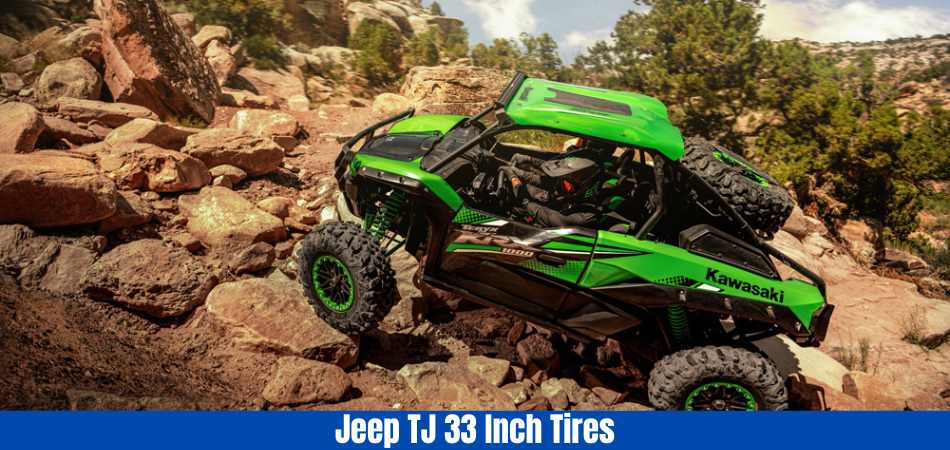
The Kawasaki Teryx4 is known for its powerful engine, unique suspension system, and comfortable seating for up to four passengers. Remember a few tips when searching for a used Kawasaki Teryx4 for Sale.
- Research and compare prices from multiple sellers to ensure you’re getting a fair deal.
- Inspect the vehicle thoroughly before making purchases.
- Check the tires, brakes, steering system, and overall body and interior condition.
- Check the mileage
- Take it for a test drive to understand how it handles different terrain types.
Finding a reliable used Kawasaki Teryx4 with patience and diligence, you’ll be cruising around in your own Kawasaki Teryx4 in no time!
Who are the Industry Competitors of Kawasaki Teryx4
1. 2023 Honda Pioneer 1000 and 1000-5
Powered by a 999cc twin-cylinder engine, the 2023 Honda Pioneer 1000 keeps up with other rigs in its class. With a hydraulic dump bed that can hold up to 1,000 pounds (600 in California) and 2,500 pounds of towing capacity, it’s a capable worker on the trail. Unlike most side-by-sides, it has a manual transmission with paddle shifters.
2. 2023 Polaris Ranger 1000 and Ranger Crew 1000
Among Polaris’ full-fat 1,000cc Ranger models, the 2023 Polaris Ranger 1000 is the most affordable. The Ranger XP 1000 lineup offers more ground clearance, travel, horsepower, and amenities, but it gives up ground clearance, travel, and horsepower. Polaris offers better alternatives if you want to do much more than haul things around your acreage with the Ranger.
3. 2023 Yamaha Wolverine RMAX2 1000
We gave the 2022 Yamaha Wolverine RMAX our Rec-Ute Editor’s Choice award last year for a reason. We couldn’t be happier with the 2023 Yamaha Wolverine RMAX because it is the same machine as the 2022 model. As always, it comes with Yamaha’s 999cc DOHC eight-valve parallel-twin engine, Fox 2.0 QS3 shocks, A-arm independent suspension, 30-inch GBC Dirt Commander 2.0 tires, and a 13.8-inch ground clearance that’s best in class.
D-Mode three-way throttle control will be available on the RMAX Sport, XT-R, and LE editions in addition to all of the base features. To fully customize your RMAX, Yamaha offers a variety of accessories and add-ons.
Is Kawasaki Teryx4 Worth the Money?
Despite being fun and nimble, the 2024 Kawasaki Teryx fails to excel in any area. The UTV’s towing capacity, suspension travel, and torque numbers are all superior to those of its competitors. However, those downgrades come with an upside, as all 2024 Kawasaki Teryx models remain under $21,000. The Teryx is a great option for those looking for a cheap entry into side-by-sides.
Conclusion: Kawasaki Teryx4 Reviews!
Whether navigating rocky terrain or tackling steep inclines, this machine delivers unbeatable sports performance that will leave you exhilarated.
So why wait? Get behind the wheel of a Kawasaki Teryx4 today and experience all that nature has to offer with your entire crew by your side!
Read more of our articles here.
FAQs
What are the most common Kawasaki Teryx4 problems?
It’s a pretty cool UTV, but there’s one problem that many owners have been complaining about. The engine and exhaust heat can enter the cabin and get uncomfortable there. Some people even avoid driving it during the hot months.
Can the speed of a Kawasaki Teryx 4 be increased?
By reprogramming your ECU, you can increase your Teryx’s speed by 10-12 MPH. Consider adding JBS clutching, Dalton clutching, or an aftermarket Kawasaki Teryx clutch kit for quicker acceleration from a standstill.
What engine is in the Kawasaki Teryx4?
Kawasaki has transformed its 783cc fuel-injected V-twin into a CVT automatic with high, low, and reverse gears. This then connects to a transfer case offering 2WD and 4WD options.
Does the Kawasaki Teryx have fuel injection?
This vehicle has a potent 783cc V-twin engine that is fuel-injected. It provides ample power for demanding terrain. Its impressive low- and mid-range torque gives it the strength to conquer even the most challenging trails.
Does the Kawasaki Teryx make a lot of noise?
According to owners, the engine noise of a Kawasaki Teryx can become deafening even when wearing a full-face helmet. It leads to ear fatigue over a long day of riding. Unprotected ears can suffer from the constant droning sounds.
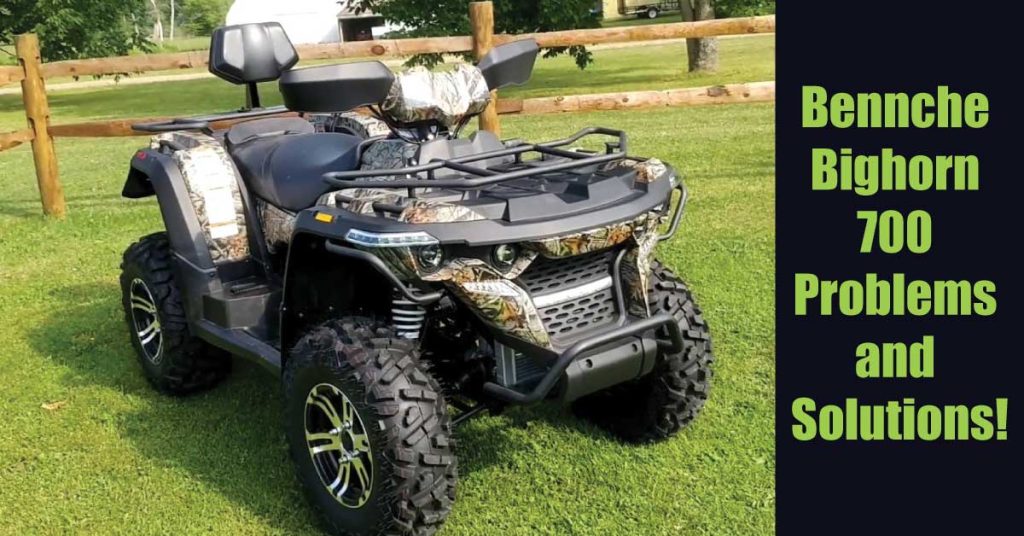
The Bennche UTV has a distinct automotive appearance and feels different when compared to a normal UTV. These UTVs were created with functionality for the sport in mind. However, this does not rule out the chance that it will make long hikes less enjoyable. Because there are various Bennche Bighorn 700 problems to be aware of before purchasing.
However, you may be thinking about buying a Bennche UTV. Bennche has been a fantastic manufacturer of capable offroading UTVs. These cars would perform admirably in off-road situations. The impressive products from the companies are UTVs for consumers.
Common problems with the Bennche UTV are fuel issue, suspension or transmission issues, etc. These are very easy to troubleshoot. But to do that, you should have basic knowledge of common problems and their solutions.
So, let’s dig into the major Bennche Bighorn 700 problems and their solutions.
Bennche Bighorn 700 UTV Overview
The Bighorn 700 has all of the same excellent features as the 500 model, allowing it to traverse any terrain. The Bighorn 700 is equipped with four-wheel independent suspension, dual vented hydraulic disc brakes, a push-button 2WD to 4WD conversion, a differential lock, a 3500-pound winch, aluminum wheels, a cup compartment, a cargo dump bed, and a large, simple-to-read digital dashboard.
Moreover, the Bighorn 700 is equipped with numerous safety features, such as a top, windshield, center console, headlights, taillights, rear view reflectors, blinkers, and a horn. These characteristics make the Bighorn 700 a street-legal UTV. In addition, the Bighorn 700 comes with a one-year limited warranty against failure and safety.
What Are the Key Specifications of the Bennche Bighorn 700?
Let’s take a look at the key specifications of the Bennche Bighorn 700.
Dimension
| Overall Length | 117.4 in |
| Overall Height | 71.8 in |
| Overall Width | 56.9 in. |
| Seat Height | 30.8 in |
| Ground Clearance | 9.6 in. |
| Front Tire | 25×8-12 |
| Rear Tire | 25×10-12 |
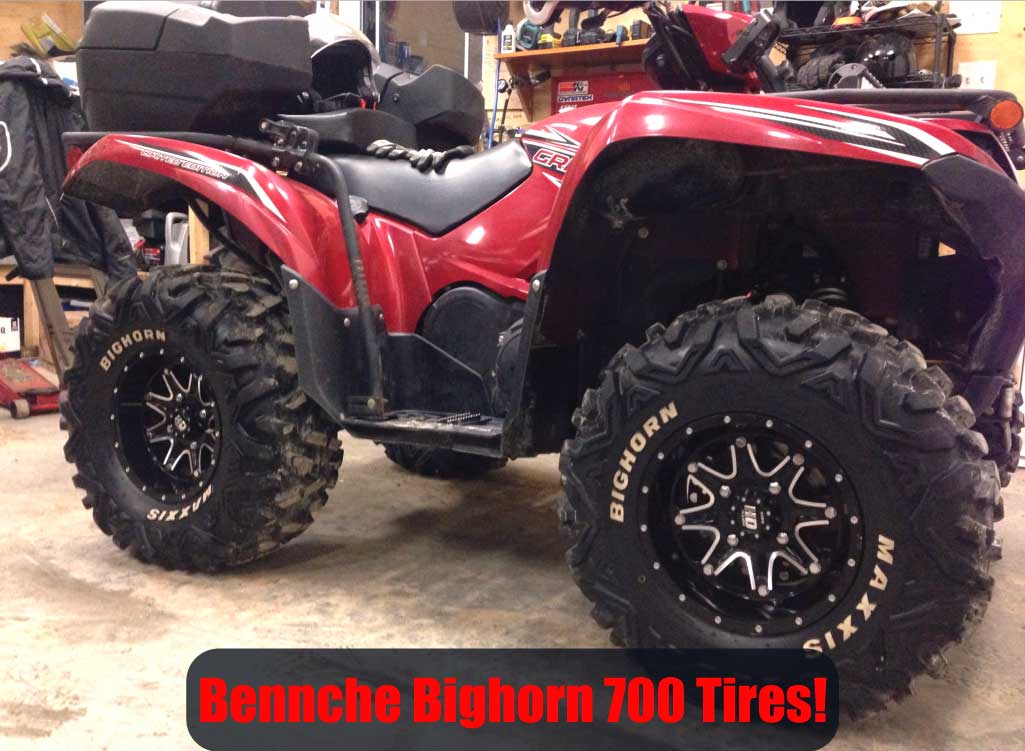
Engine
| Engine Type | Four-Stroke, Single Cylinder |
| Displacement | 686 cc |
| Bore & Stroke | 102 x 84mm |
| Compression Ratio | 9.2:1 |
| Transmission | Automatic L-H-N-R-P |
| Drive Train | Shaft Drive; On-Demand 2WD/4WD; Locking Differential |
Suspension
| Front & Rear Suspension | Independent Double Wishbone |
Brake
| Front & Rear Brake | Dual Ventilated Hydraulic Disc |
Others
| Colour | Black, Blue, Dark Green, Vista Camouflage |
| Warranty | 12 Months Limited Warranty |
What Are the Common Problems of Bennche Bighorn 700?
The Bennche Bighorn 700 might have numerous problems. But the most common and irritating ones are as follows:
- UTV Stops Suddenly
- Shifting Problems
- Suspension Problems
- Uncomfortable Riding
- Faulty Injection System
- Smoke Production
- Broken Shaft
- Clogged Radiator
Let’s discuss the problems in brief and their possible solutions.
UTV Stops Suddenly
The Bennche UTV might go down at any time. There may be no oil leak, no trouble in the drive shaft, and nothing else; it will just stop. There might be an explanation for the problem. If there is excessive moisture on the underbody protection, the Bennche UTV may shut down.
This may cause the transmission to dry up, forcing the engine to cease functioning. The UTV then fails to start, no matter how diligently you try.
Solution
The solution is to continually inspect the UTV for flaws. Check the UTV for oil leaks. Use your bike regularly and safely.
Shifting Problem of Bighorn 700
Transferring to third gear is difficult if your Bennche UTV has traveled more than 8,000 kilometers, particularly in cold weather. Unfortunately, changing the oil and oil filters makes no difference in correcting this problem.
So, the majority of customers complain about UTV’s inadequate air ventilation. In the winter, let the quad engine warm up before starting it, or ride it for a short distance before starting it.
Solution
Make some adjustments to your UTV’s accelerator. Check to determine if the angle sensors need to be replaced right away. There must be no shift pins in the transmission path. Microswitches must also be checked on a regular basis.
Suspension Problem of Bighorn 700
The front and rear suspensions of the Bennche UTVs are nitrogen-filled MacPherson-independent dual A-arms. This may be enough to manage the UTV at a higher pace. But how good is the UTV when it comes to mountain biking?
While it was designed to make usage easier, it may be troublesome when driving in 2WD or under high-stress conditions.
Solution
In 4WD mode, reach for the differential lock. It may be enabled by pressing the associated button. The vehicle would gather sufficient force to ride up the steeper tracks with ease.
Uncomfortable Riding with Bighorn 700
Another thing to consider is Bennche UTV’s failure to suit the comfort needs of those starting on trial journeys on rough roads. The vehicle is the ideal size for the price, but it is typically less than necessary since people, particularly the elderly, are unable to cope with a lack of room on treks.
Solution
There are no effective solutions to such an issue. In this scenario, you must make a new purchase. For various buyers, it might be a significant and costly option.
Faulty Injection System of Bighorn 700
Dirty radiator and grill screens can occasionally aggravate overheating issues. An overworked engine or a low coolant level can also cause overheating. It can also occur if the motor-driven fan fails to turn as a result of a blown fuse or an electrical fault.
Solution
Adding two fans will assist in cooling the engine while also encircling the exhaust to prevent it from overheating.
Smoke Production in Bighorn 700
If you observe a lot of smoke at the start of your ride but it fades away later, you’re probably dealing with defective piston rings, valve guides, or seals. As the UTV warms up, the oil burns off more efficiently and the smoke disappears.
Solution
Don’t forget to do frequent UTV checks. It has the potential to minimize smoke-related issues on a larger scale.
Broken Shaft of Bighorn 700
The concern is that a faulty dynamic power steering shaft will break under certain conditions, resulting in immediate steering issues.
Solution
Contact your dealer or set up a meeting with the company to resolve this issue.
Clogged Radiator of Bighorn 700
One of the most typical problems that Bennche UTV owners confront is a blocked radiator. The radiator is crucial in regulating the temperature of the engine; if it becomes blocked with debris or dirt, the engine can overheat and cause damage.
Solution
To resolve this issue, it is critical to first determine the source of the obstruction. Dirt and debris can build up in the radiator over time, especially if the UTV is utilized in dusty or muddy conditions.
What are the Pros and Cons of Bennche Bighorn 700 UTV?
Pros of Bennche Bighorn 700 UTV
- Bennche UTV is a rugged and long-lasting vehicle.
- It is an inexpensive vehicle with a powerful engine.
- This vehicle provides consumers with exceptional ground clearance.
- This UTV’s additional safety features distinguish it from others.
- This UTV has an outstanding towing capacity.
Cons of Bennche Bighorn 700 UTV
- Its battery frequently loses charge.
- This UTV’s gearshifts are difficult to use and rigid.
- This UTV has a limited capacity for beds.
Is the Bennche Bighorn 700 a Reliable UTV?
Indeed, it is. Off-road activities make extensive use of Bencche off-road vehicles. These perform above and beyond expectations. longer service. These UTVs have issues that cannot be ignored because they can be easily solved over time.
It is important to take into account aspects like maintenance, usage, and user experiences because reliability might change between models and even between individual units. Additionally, frequent maintenance, following the manufacturer’s instructions, and safe usage all play a significant part in the overall dependability and longevity of any UTV.
User Review on Bennche Bighorn 700 Problems
Customers have complained about Bennche UTVs, just as they do about every other UTV manufacturer.
Some defects are minor, while others are major. Despite its advantages, this model has garnered both favorable and negative reviews on various websites. However, the majority of consumers have given good feedback and stated that they are pleased with the vehicle’s performance.
Although the UTV has certain flaws, the best way to solve them is to be aware of them. You may also look into these concerns further by contacting the firm directly. The nicest thing about Bennche is that the firm is open to all kinds of debates.
You can also get mechanical help if you are unable to consult the firm for whatever reason. The technician would determine the primary reason and offer appropriate fixes.
What are the Bennche Bighorn 700 Accessories for Preventing Problems?
There are several accessories available for the Bennche Bighorn 700 that can enhance its performance and functionality. Here are some popular options:
- Performance Exhaust
- Performance Air Filter
- Suspension Upgrades
- Winch
- Skid Plates
- Roof and Windshield
- LED Light Bars
- Storage upgrades
Closing Remarks
You should now be familiar with the most common Bennche UTV problems. Routine maintenance is essential for fixing all of your UTV’s problems. When you do, you can count on this ATV to give you your money’s worth.
Also, bear in mind that the owner’s manual may assist you in dealing with small Bennche UTV concerns. Reading the guidebook will also help you become acquainted with the fundamentals and understand how the various parts function.
Knowing the fundamentals can help you diagnose problems with your UTV when you’re out on the trail. As a consequence, you’ll
FAQs
Why is my Bennche Bighorn 700 having electrical problems?
Electrical troubles with the Bennche Bighorn 700 can develop for a variety of causes, including defective wiring, blown fuses, or ignition switch faults. It is suggested that an electrical system be diagnosed and repaired by a competent expert.
What should I do if my Bennche Bighorn 700 becomes too hot?
If your Bennche Bighorn 700 is overheating, it is critical to solve the issue as soon as possible to minimize engine damage. Check the coolant levels, cooling fan, and thermostat. If the problem persists, check the airflow and consider visiting a professional.
How can I fix gearbox issues with my Bennche Bighorn 700?
Transmission problems, such as trouble shifting gears or grinding noises, may necessitate the services of an expert. Worn-out clutches, transmission belt issues, or other transmission-related components that require repair or modification are common causes.
What should I do if my Bennche Bighorn 700’s fuel system fails?
If you’re having problems with your fuel system, such as clogged filters, fuel pump failures, or carburetor troubles, you should have a professional examine and clean the affected components. Proper maintenance and regular fuel system checks can aid in the prevention of these issues.
How can I address suspension and steering problems in my Bennche Bighorn 700?
Suspension and steering issues, such as worn-out bushings, loose ball joints, or excessive play in the steering mechanism, can affect the vehicle’s handling. Contact an authorized service center to diagnose and repair these problems to ensure safe operation of your Bennche Bighorn 700.
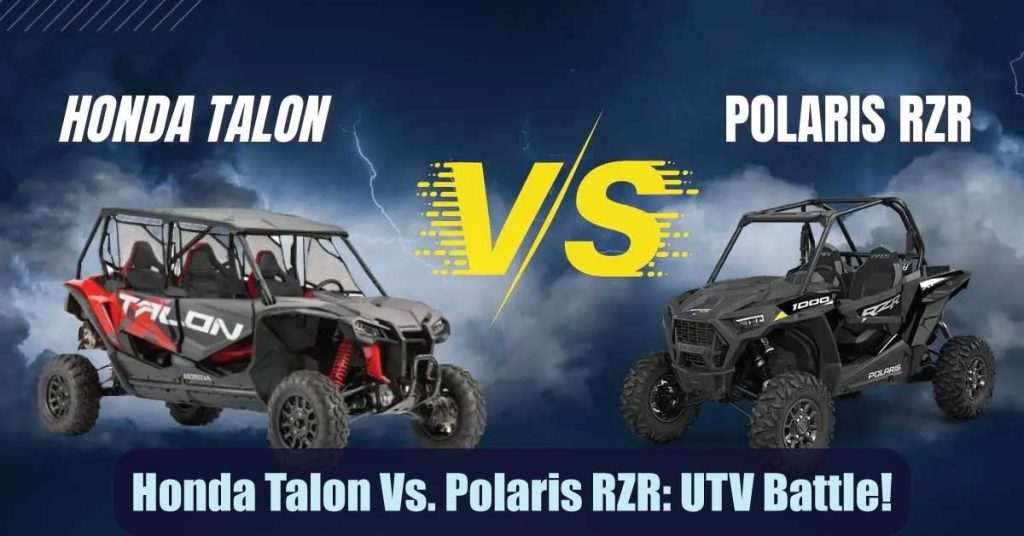
With increasing off-road recreational activities, the UTV market is rapidly expanding. So, you might be wondering between Honda Talon vs RZR While considering buying one.
Between these two vehicles, there have been many debates in recent years. But the Talon is superior to the RZR in every way when comparing Honda Talon vs RZR.
Despite their high acclaim and sophistication, both vehicles are prevalent. So between Honda Talon vs RZR: what’s the difference?
The differences between these vehicles are very faint, but they can be overwhelming. You should, therefore consider this article when you are making your next UTV purchase.
Honda Talon
Sports side-by-side are getting more and more popular every year. Honda Talon keeps improving every year. There are two- and four-seat Talons, as well as suspension options.
This vehicle features Honda’s high-output engine, gear-driven automatic transmission DCT, and advanced i-4WD technology.
Features Of Honda Talon
Honda Talon UTV is a 4×4, high-performance utility vehicle. Off-roading enthusiasts will enjoy this adventure. Honda Talon offers an affordable, reliable, and fuel-efficient vehicle. Let’s know the features that it provides.
Electric start system
By pulling the starter cord once, you can quickly start your UTV. This attribute is also excellent for cold weather because the engine mustn’t warm up before being created.
As the ambient air temperature decreases during the winter months, traditional ignition systems may have difficulty starting.
Anti-lock Braking System (ABS)
After braking hard into turns or corners, this system helps reduce skid marks on the road surface by keeping the front wheel straight while braking. Furthermore, it reduces tire wear, especially when braking at high speeds in wet conditions.
Automatic Six-Speed DCT Transmission
You can drive the way you want with Honda gear-driven DCT’s convenience, strength, control, and efficiency.
Plus, Sport Mode provides spirited performance with higher RPM shifting for a fun driving experience. Choosing the gear ratio and engine speed is up to you with a DCT.
Super comfortable
Honda engineers the Talon UTV to provide a comfortable ride while driving on rough terrains. High-end SUVs offer all the safety features you’d expect. The seat adjusts up to five inches forward or backward and can recline up to five degrees back.
Pros of Honda Talon
- It offers a powerful engine, responsive handling, and advanced suspension systems.
- High-quality than others.
- Much quieter ride than other ‘sport’ model ATVs.
- Has a drive shaft in the drive train instead of a CVT belt
Cons of Honda Talon
- The 2-seat models of the Talon feel a bit tippy or uneasy at speed around tight corners.
- The Honda Talon can be relatively expensive
- The maintenance and service centers are limited
Polaris RZR
Polaris RZR is a 4×4 off-road vehicle manufactured and marketed by Polaris Industries. In 2006, it succeeds the original RZR. People also call the current generation of RZRs “Black Lightning.”
The user experience with RIDE COMMAND technology and the intelligent control of DYNAMIX active suspension. Polaris RZR’s top speed is estimated to be 90 mph.
Polaris RZR Features
The Polaris RZR is a great off-road vehicle. It distinguishes itself from other off-road vehicles thanks to a variety of features. The Polaris RZR stands apart from other versions because of the following features:
Full-time 4WD System
The Polaris RZR’s full-time 4WD technology helps it maintain excellent stability and traction in all terrains, including sand and snow. Additionally, this device enhances roadside vehicle speed regulation.
Air Ride Suspension
This model’s air spring suspension system makes driving on rough roads or trails comfortable. Additionally, the system provides excellent support over uneven or muddy terrain, which helps to keep you safe.
Lockable Differential Lock
Drivers can use Lockable Differential Lock when they need extra traction on a trail or in mud. Driving in muddy conditions or across difficult terrain is much easier thanks to this.
Aerodynamics
Polaris incorporates aerodynamics into the RZR design to decrease drag and improve fuel efficiency. This UTV performs better aerodynamically due to its short frontal area, high center of gravity, broad track, and low center of gravity rake.
Great Suspension
RZR’s leaf spring-mounted rear axle makes rough terrain driving safer. You are less likely to damage your vehicle’s frame or springs as you drive over obstacles and bumps.
Pros of Polaris RZR
- A strong contender throughout the off-road community
- The RZR line offers a wide range of models
- Easily add performance upgrades to step up your UTV’s status
- Customizing the Polaris RZR is super easy
Cons of Polaris RZR
- The RZR produces emissions, contributing to environmental pollution.
- The RZR is noisy at higher speeds.
- The vibrations from the engine felt inside the cabin affect the comfort level.
Honda Talon vs RZR: Key Differences
The Honda Talon and Polaris RZR are off-road vehicles for the wild. Some differences set them apart even though they share many similarities.
- The Honda Talon has a 2.4-liter four-cylinder engine that makes 173 horsepower and 162 pound-feet of torque. Despite its 1,170cc engine, the RZR generates 160 horsepower and 259 pounds-feet of torque.
- Both models have an automatic transmission. But you can equip the Talon with a manual gearbox. While The RZR has an automatic transmission.
- Disc brakes are standard on the Talon, while twin discs are standard on the RZR. Electronic stability control and antilock braking are standard on both vehicles.
- The Honda Talon has a price range of $20,999 to $22,099, whereas the Polaris RZR has a price range of $27,199 to $33,599.
- The riding height of these two versions is another distinction. The ride height of the Polaris RZR is 24 inches. On the contrary, the Honda Talon’s 17 inches.
- Depending on your chosen model and driving conditions, fuel capacity can make all the difference between these two models.
Which One Is Faster? Honda Talon Vs RZR?
A competition featuring two of these side-by-side vehicles would be tremendously entertaining due to their nearly identical power outputs and levels of precision regarding balancing and capacity. Who, though, would come out on top? When compared to the Polaris RZR, how fast is the Honda Talon?
While the Polaris RZR often has its top speed limited to 80 mph, the Honda Talon tops out at 75 mph. However, much of what makes a race successful is out of anyone’s control. The outcome of a real battle between the two is wide open.
Which do You Choose Between Honda Talon Vs RZR
Off-road vehicles such as the Polaris RZR and the Honda Talon are becoming increasingly popular. What is the better option? That’s up to you!
In a tight spot or uphill, the Polaris RZR isn’t powerful enough to get out. Despite being cheaper than the Honda Talon, RZR Sport Utility Vehicle doesn’t expect to get much power. Two seats are available for your passengers on the Polaris RZR so that they can also enjoy the ride.
Although the Honda Talon is smaller than the Polaris RZR, it’s still highly powerful. Furthermore, you have more legroom in it than in the RZR, making it a more comfortable ride. In tough conditions, the Honda Talon can also be fitted with a 4WD system.
There is a lot more power and weight in the Polaris RZR than in the Honda Talon, however. The steep slopes and hills make it difficult for people with difficulty climbing. Physically disabled people or those with limited mobility may not find this to be the most convenient option.
You can’t go wrong with the RZR XP Ultimate or the Honda Talon 1000R if you want to purchase a two-seat off-road vehicle. Power, ground clearance, suspension travel, attachments, and standard technology are all areas where the RZR shines.
It’s more expensive than the Talon 1000R, though. As the customer, you can decide which option is best for you. You can’t go wrong with either model, and we guarantee it!
Conclusion: Honda Talon vs RZR!
Both Honda Talon & RZR offer a lot of value for the price. Both Honda Talon and the Polaris RZR hottest sport utility vehicles on the market today. With superb steering control, they provide excellent power and outstanding performance.
But the Honda Talon is a fun and agile off-road vehicle. It can handle various terrains. Such as canyon roads and backroads, explore mountainous regions, and rip through hills easily. Off-road, you’ll enjoy its outstanding performance, and rough terrain won’t bother it.
FAQs
How’s the interior comfort and features between the Honda Talon and the Polaris RZR?
The Talon and the RZR prioritize different aspects of interior comfort and features. The Talon focuses on providing a comfortable and functional cabin with well-designed seats, ample storage space, and a user-friendly layout.
The RZR emphasizes a sportier and performance-oriented interior. It features bolstered seats, a sports steering wheel, and advanced instrumentation for performance monitoring.
what are the key takeaways when comparing the Honda Talon and the Polaris RZR?
The Honda Talon and Polaris RZR are both formidable off-road vehicles, each with its strengths. The Talon offers excellent crawling capabilities, a comfortable interior, and competitive pricing, making it well-suited for technical trails and rock crawling.
On the other hand, the RZR emphasizes agility, speed, and sportiness, making it a great choice for fast-paced trail riding and dune running.
Is the Honda Talon suitable for different types of off-road terrain?
Yes, the Honda Talon is designed to tackle various off-road environments, including trails, dunes, rocks, and challenging terrains. Thanks to its robust suspension, high ground clearance, and capable drivetrain.
How many models are available in the Polaris RZR lineup?
The Polaris RZR lineup offers a variety of models, including the RZR Trail, RZR Sport, and RZR Pro.
What are some notable safety features of the Polaris RZR?
The Polaris RZR models have safety features such as roll cages, three-point seatbelts, doors or nets, and a comprehensive braking system with disc brakes for reliable stopping power.
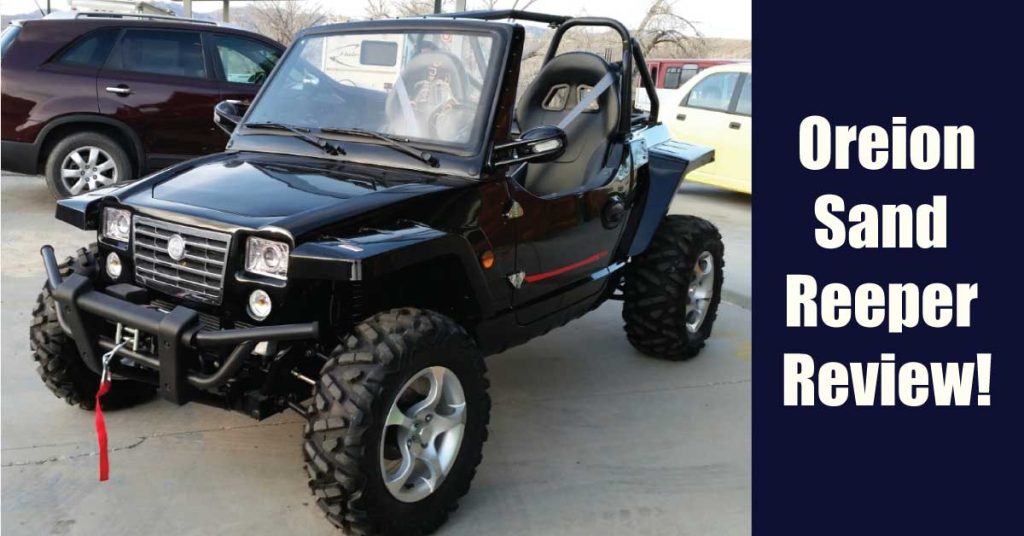
If you’re looking for an off-road vehicle that can easily handle challenging terrains, the Oreion Sand Reeper is an excellent choice. It offers an ATV’s ruggedness and a car’s comfort and safety features. Its sturdy construction and powerful engine make it perfect for outdoor adventures.
This off-road vehicle features a spacious cabin that comfortably seats two passengers. The interior has modern amenities such as adjustable seats, a durable dashboard, and a user-friendly control panel. Its reliable four-wheel drive system ensures excellent traction on uneven surfaces. It is perfect for sandy beaches, rocky trails, or muddy tracks.
Moreover, the Sand Reeper’s robust suspension system provides a smooth ride even on bumpy roads. Its large, knobby tires enhance grip and stability. It allows you to navigate confidently through challenging terrains. The vehicle’s responsive steering and efficient braking system provide precise control and reliable stopping power.
To learn more about the Oreion Reeper review, parts, top speed, etc., scroll down and get the most out of it.
Oreion Sand Reeper: Features!
Off-road Performance
The Oreion Reeper is a formidable vehicle that easily handles even the roughest terrains. It boasts a unique 4WD system, generous ground clearance. And also a sturdy suspension to withstand whatever challenges come.
Engine Power: Oreion Reeper 1100 Horsepower
The Oreion Reeper boasts a powerful engine, typically a four-cylinder or V6. That provides plenty of torque for off-road excursions. With 1100 horsepower, this vehicle is a force to be reckoned with.
Safety Features
Safety is a top priority, and the Sand Reeper has features like seat belts, roll bars, and a protective windshield. Additionally, it has powerful headlights and taillights. That ensures you excellent visibility during nighttime rides.
Utility and Cargo Space
Some sand Reeper models offer cargo beds or storage compartments. It lets you transport gear, tools, or supplies during off-road adventures.
Styling
If you appreciate sophisticated design, the Signature Reeper grill might be just what you’re looking for. Its elevated UTV styling adds an extra touch of refinement to your vehicle.
Utility
The dependable 3,000-pound winch is consistently primed and prepared for any task. Instill you with an extra layer of certainty and peace of mind.
Suspension System
The Reeper often features a robust suspension system. It provides enhanced stability and a smoother off-road experience.
Lighting
Off-road lights, including headlights, fog lights, and light bars, are commonly included to improve visibility during nighttime or low-light conditions.
Customization Options
Depending on the model, various customization options may be available. Such as different paint colors, graphics packages, lifted Oreion Reeper, or additional accessories.
Oreion Reeper Review: Parts, Top Speeds & More!
The Oreion Reeper review offers a comprehensive overview of its parts, top speeds, lifted Oreion Reeper, etc.
Oreion Reeper Parts
Oreion Reeper Parts include:
- Bumpers
- Spare tire rack
- Cargo rack
- Nerf bars, etc.
Bumpers
The Reaper Series has front and rear bumper configurations that give it a rugged appearance and protect the vehicle as it navigates through different terrains.
These designs are made of 1.5” diameter steel tubing and are customized to wrap around the Reaper’s body lines.
Spare tire rack
You can enjoy style and practicality with the Oreion Sand Reeper Series Spare Tire Holder. This holder offers a straightforward solution for transporting a spare tire without sacrificing cargo or storage space.
Cargo Rack
If you’re planning a longer ride, the Reeper Apex Series Cargo Rack is a perfect addition to your vehicle. This rack is specifically designed to be mounted onto the rear support bars. And it also offers a generous amount of storage space.
With this cargo rack, you can bring all your camping gear, coolers, and other essential items without worrying about space constraints. The Reeper Apex Series Cargo Rack is a reliable and convenient solution for your next adventure.
Nerf Bars
If you’re looking to enhance the protection and style of your Reeper or Reeper4, several Nerf bars are available in different sizes. These bars safeguard the sides of your Reeper Series while adding a touch of style to its appearance.
Oreion Reeper Top Speed
The Oreion Sand Reeper is a genuine off-road vehicle that can handle medium to rough terrain and trails. It comes in both two and four-seater options for off-road enthusiasts to enjoy. With a top speed of 60 mph, this vehicle is perfect for off-road adventures.
This vehicle has an LSV option, which means it adheres to safety standards and regulations set by NHSTA for street use. It has a maximum speed of 25 mph. That allows you to transition between off-road adventures and street driving seamlessly.
Oreion Reeper for Sale Near Me!
Finding an Oreion Reeper for sale near your location is relatively easy. Various online automotive marketplaces, Oreion Reeper dealers, or classified ads websites come in handy to search for available listings.
These platforms typically provide detailed descriptions, specifications, and pricing information for vehicles.
It’s important to carefully review the listing and pay attention to the vehicle’s condition, mileage, top speed, and any added features or modifications. You may also want to contact the seller or dealership to ask additional questions and schedule a test drive.
Is Oreion Reeper Street Legal?
The Oreion Reeper is only allowed to be driven on roads that are specified for off-highway vehicle use. If a resident needs the required documentation for title or registration, they may apply for a 90-day registration. Overall, it is possible to make an ATV/UTV street legal.
The Oreion Reeper, to be street-legal, must, therefore, have four wheels, a maximum speed of 25 MPH, and a weight of less than 3000 pounds. In addition, it has a standard array of turn signals, brake lights, backup lights, parking brakes, safety belts, and windscreen.
Once you’ve confirmed that your LSV satisfies all the requisite criteria, you have to register it with your state’s DMV, depending on your residence. It’s essential to remember that not all states mandate this step. LSVs are typically utilized for brief excursions to complete errands. Or to participate in social or recreational events within retirement communities, or traverse golf courses in planned neighborhoods.
Alaska is the only state that prohibits using side-by-side LSV vehicles on public roads. However, if you encounter public roads or bridges, you may cross them. Despite meeting NHTSA standards, it is critical to comply with your state’s regulations concerning vehicles on public roads when using the Oreion Reeper.
Before making a purchase, contact your local DMV office to ensure you have all the necessary steps covered.
How much does it cost to buy an Oreion Reeper?
To get a price from the source, visit their website, click on find a dealer, and contact the nearest dealer. The costs of their services and any replacement parts you might require are not disclosed anywhere on their website.
The current price of a Sand Reeper ranges from $15,000 to $20,000, including the 3,000-pound winch that is standard on all versions. Your final cost will depend on the combination of included and optional extras.
There could be more affordable options. Shop around to find a decent offer. One pricing we saw dropped the price to $14,000. The classifieds may have the best-used car deals.
How Do You Think About Oreion Reeper?
Some have called it a “Chinese knock-off,” and you’re well aware of the reputation of such goods. Many people question this car’s worth and reliability even though a well-known Chinese firm manufactured the engine.
You’ll have to form your own opinion about the quality of these automobiles. One of the owners said that a stone could ruin the steering capability. You should check the condition of your car thoroughly before taking it into the bush, as it is not a genuine off-road vehicle.
The automobiles are constructed in the United States. But they have yet to start producing them there. The HP is low, coming in around the mid-to-mid-50s. The number of people who enthusiastically endorse it is low.
Conclusion
Now you might know everything about the off-roading beast, Oreion Sand Reeper. It’s a versatile off-road vehicle that combines ruggedness, comfort, and safety. It offers an exhilarating driving experience. Also provides the necessary features to tackle any outdoor adventure.
FAQs
What are the dimensions of the Oreion Reeper 4-seater?
The dimensions of the Oreion Reeper 4-seater are L × W x H10.3 × 5.4 × 5.3 FT. It means Wheelbase is 85.5 “, Front Track is 54.5”, and the Ground Clearance is 9.8”
What’s the fuel efficiency of an Oreion Reeper?
This automobile uses gasoline and can attain a fuel efficiency of 40 miles per gallon on standard roadway surfaces and rugged, off-road terrain.
What type of engine does an Oreion Reeper have?
The Oreion Sand Reeper has a Chery Brand engine with an 812cc EFI liquid-cooled 3-cylinder four-stroke design. With its advanced cooling system and smooth operation, the Chery engine delivers a comfortable and dependable driving experience.
Is it legal to drive Oreion Reeper in Texas?
Farmers or ranchers can use ATVs and UTVs for less than 25 miles on public roads. However, the vehicles must have brakes, a muffler, headlights, and taillights.
How much the Oreion Reeper 4 weighs?
The Oreion Reeper 4 boasts a weight of 1,168 lbs for 2WD and 1,140 kg for 4WD.
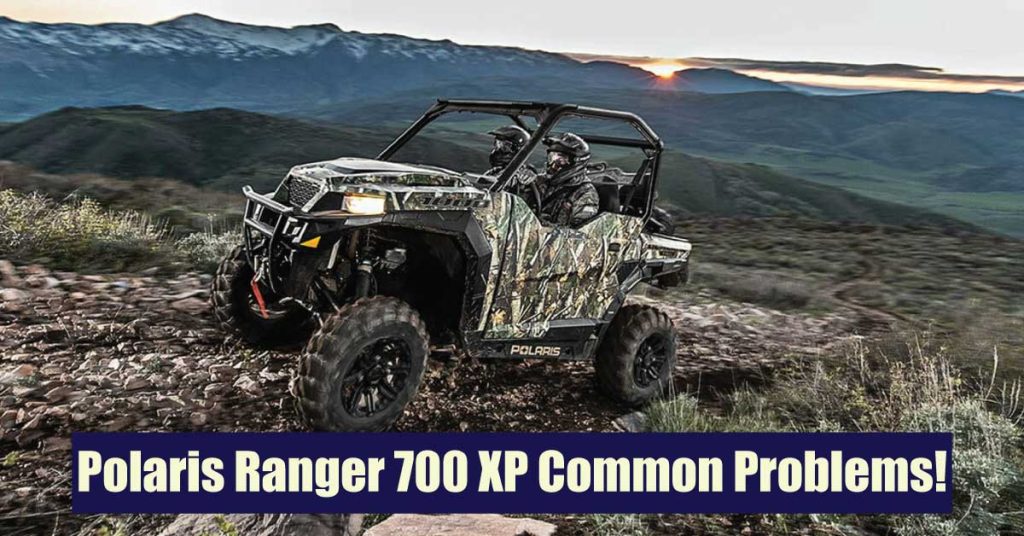
The Polaris Ranger 700 XP model is no exception to the company’s reputation for making some of the most dependable UTVs. However, many users have reported a common Polaris Ranger 700XP Problems. The most common problems include sensor issues, air filter problems, running issues, insufficient pressure, etc.
Even though some contend that the Ranger series is more expensive than other UTVs on the market, they are more durable than their rivals. Therefore, the cost is justified given the high caliber of the performance and service you receive.
Read this article to discover the most typical issues that a Polaris Ranger 700XP could have-
Polaris Ranger 700XP Overview
The Polaris Ranger XP is comparable to the 4×4 model, including a 40-horsepower, liquid-cooled 683cc twin-cylinder engine.
Polaris has added electronic fuel infusion to the 700 engine. The larger 700 engines also have a 500-watt alternator to power additional lighting and electrical accessories.
Additionally, the XP features slightly bigger tires than the 500 model. The Polaris Ranger XP 700 EFI has a cargo compartment capacity of 1,000 pounds and a towing capacity of 1,750 pounds.
What are the Main Features of the Polaris Ranger 700XP?
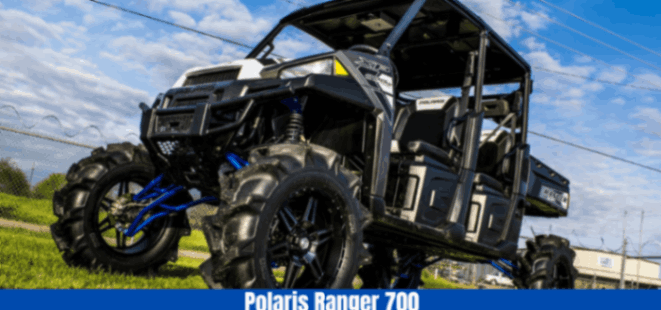
The Polaris Ranger 700 XP is an off-road utility vehicle renowned for its durability and versatility. Key characteristics of the Polaris Ranger 700 XP include:
Engine
The Ranger 700 XP is equipped with a 683cc, twin-cylinder, liquid-cooled engine that provides ample power for various duties and terrains.
Four-Wheel Drive (4WD)
The vehicle has a genuine 4WD system that can be engaged or disengaged when necessary. This attribute improves traction and control in difficult conditions.
Suspension
The independent rear suspension (IRS) system on the Ranger 700 XP contributes to a smooth and comfortable journey. The suspension system is adjustable, enabling the ride quality to be tailored to the terrain and cargo.
Cargo Capacity
This model features a rear dump box that can accommodate up to 1,000 pounds (453.6 kilogrammes) of merchandise. The cargo compartment is equipped with gas-assist dumping for effortless unloading.
Towing Capacity
With a towing capacity of up to 1,500 pounds (680 kilogrammes), the Ranger 700 XP is capable of towing trailers, equipment, and other heavy cargo.
Seating Capacity
The bench seat configuration accommodates up to three passengers, allowing you to bring along friends or colleagues.
Versatility
Numerous accouterments and attachments, such as snow plows, winches, brush guards, and cargo racks, are available for the Ranger 700 XP, enabling customization for various work and recreational purposes.
What are the common Polaris Ranger 700XP Problems?
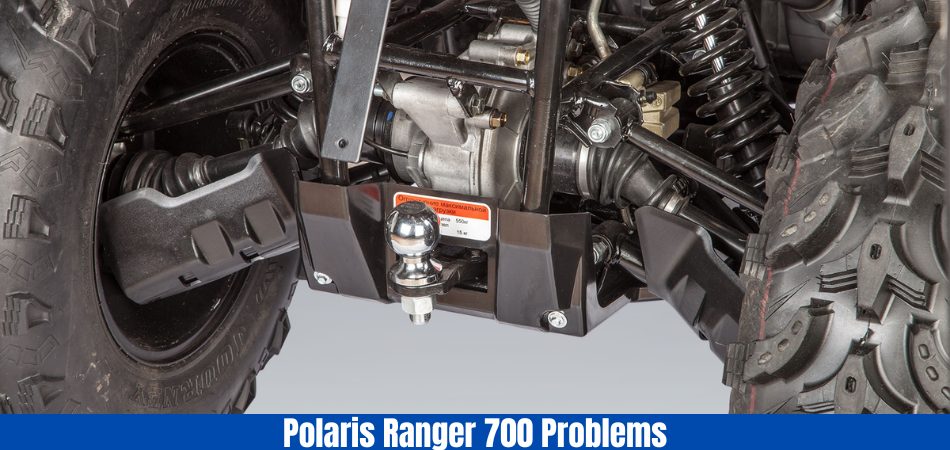
Unfortunately, there are drawbacks to the Polaris Ranger 700XP UTV model, and due to these limitations, many owners have had troubleshooting problems.
The following are the most likely Polaris Ranger 700XP Problems that you need to be aware of:
- Running problem
- TPS Sensor Issue
- Insufficient Pressure
- Clunk Sounds During Riding
- Blocked Fuel & Air Filters
- Vapor Lock Problem
- Rusty High Lifter Differential Splines
- Vibrations in the Differential Area
- EFI Fuel Pump Issue
1. Running Problem
Polaris Ranger XP 700 users have frequently complained about a lack of power issues. They also observed that when this occurs, the engine functions perfectly. They can’t crank the engine up since it only bogs down when they press the accelerator. The TBAP sensor being defective or unclean or the wiring being damaged are the two most frequent causes of this issue.
Solution
It is advised to correctly check the TBAP sensor and the connected wire as soon as this problem is encountered.
2. TPS sensor Issue
Most Ranger users frequently have TPS (Throttle Position Sensor) sensors failing or not responding as intended.
It was necessary to repair the faulty TPS sensor that caused the problem. The TPS sensor may not be precisely calibrated in all Ranger 700xp versions. The engine gradually develops complicated starting issues when it is cold as a result of this.
Solution
If your Polaris Ranger has TPS sensor issues, you should investigate and see if the sensor is somehow blocked or damaged. If the TPS sensor is damaged, you should replace it to resolve this issue.
3. Insufficient Pressure
Many Polaris Ranger 700 XP model owners have complained about this problem with their Ranger. Additionally, several users reported experiencing engine cutouts at 25 mph and poor performance until the accelerator was fully depressed.
Solution
Bogging happens due to the accumulation of debris on the engine body, and the Polaris Ranger must shut down when it runs out of fuel. In this instance, clearing the debris is necessary.
4. Clunk Sounds During Riding
You’ll likely hear clunking noises while driving your 2008 Polaris Ranger. Numerous users of this model have mentioned this issue. They have also observed that the car does not react to turns in either direction.
Solution
In order to determine whether the drive belt is to blame for the odd clunking sound that the Polaris Ranger XP 700 makes, it is necessary to remove the cover and check it for damage or breakage. If you’re certain that a damaged belt is to blame for this issue, all you have to do to fix your Ranger is replace the belt.
5. Blocked Fuel & Air Filters
Clogged air filters are not just a prevalent issue for Rangers; they also occur in a lot of other cars. When you are driving on a road with excessive dust, it mostly occurs. The air filter or fuel filter can become clogged as a result of the extra corrosion and dirt that go within.
Solution
Cleaning your Polaris Ranger frequently will help to cure the blocked and clogged air filter issue. Additionally, you might want to check whether the wiring on your Polaris Ranger has gotten loose or if either of the spark plugs has become damaged.
6. Vapor Lock Problem
The ranger performs admirably when you start it up for the day. However, if you stop and then restart it, let’s say an hour later, it performs horribly. However, after using it for a while, it resumed performing admirably.
Solution
If a fuel line is placed in a vapor lock, the engine’s heat causes it to become extremely hot. The fuel that is liquid and cooler than the line and flowing through the gas lines is safe, thus everything is in order. You run into issues though if it becomes extremely hot, such as when the engine shuts down and the oil in the line boils up enough to evaporate as opposed to staying liquid.
7. Rusty High Lifter Differential Splines
Rust buildup on the splines in the front and rear differentials of the Polaris Ranger is a typical problem. The Polaris Ranger High Lifter differential splines get quite challenging to remove if corrosion and rust are allowed to build up.
Solution
You might try using an aerosolized Kroil solution, such as Kano Laboratories’ Aerokroil. These expensive penetrating oils will highlight oils, remove crusted grease, dissolve stuck-on gum, and stop corrosion.
8. Vibrations in the Differential Area
Vibration is one of the main issues with the Polaris Ranger High Lifter front differential. Driveshafts that are twisted or out of phase frequently cause shakiness and vibration.
Solution
If the vibrations continue despite replacing the carrier bearing, you should balance or replace your drive shaft.
9. EFI Fuel Pump Issue
EFI frequently clogs and releases debris into the gas. As a consequence, the engine begins to behave erratically, such as running rich or refusing to start unless you depress the pedal.
Solution
The engine may occasionally behave this way if your 700xp EFI has been resting for a while and needs some condensation in the tank. Then you’ll need to clean the injector using a specialised cleaner.
Learn more about Polaris Ranger problems here.
Is the Polaris Ranger 700XP a Dealbreaker?
The renowned Polaris Ranger brand no longer produces the 700xp model because they have already introduced a number of improved and enhanced models.
Additionally, the enhanced features on this updated assortment of Ranger UTVs will leave a lasting impression on the riders. That is one of the main reasons why so few people today discuss this older Ranger UTV type. A lot of people have acknowledged their delight and the fact that they have not encountered any significant problems when using their Ranger 700xp. Therefore, these typical issues are not at all a deal-breaker.
Accessories for Upgrading Polaris Ranger 700XP
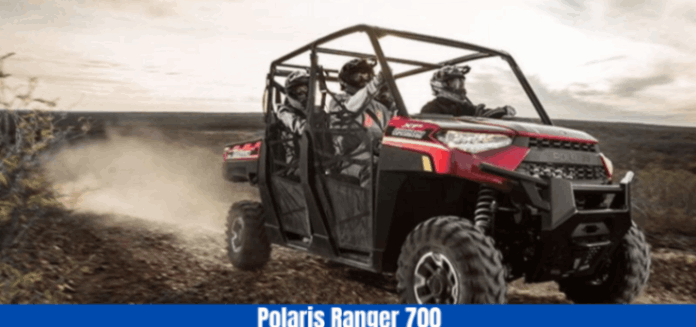
Several accessories and parts are available for the Polaris Ranger 700 XP to enhance its functionality and customize it according to your needs. Here are some popular options:
- Roof and Windscreen
- Winch
- Bumpers and Guards
- Storage and Cargo updates
- Lighting
- Suspension Upgrades
- Audio Systems
What are the Maintenance Tips for Polaris Ranger 700XP?
Maintaining your Polaris Ranger 700 XP in pristine condition requires routine upkeep. Here are some suggestions for vehicle maintenance:
- Perform routine visual inspections of your Ranger to check for signs of wear and tear, loose or damaged components, leakage, and other problems.
- Implement the manufacturer’s recommendations when changing the oil and filter.
- Clean or replace the air filter at the intervals specified by the manufacturer or when it becomes clogged with grime and debris.
- Regularly lubricate the suspension, steering, and other movable elements’ connections.
- Check tire pressure routinely and keep it within the recommended range. Examine tyres for any indications of corrosion or excessive wear.
- constantly refer to the owner’s manual for Polaris-provided maintenance guidelines and schedules. It contains pertinent information and tailored recommendations for your specific model.
Final Words: Polaris Ranger 700XP Problems
A Polaris Ranger might be your best option if you want to go farming or simply explore the forests where ordinary automobiles can’t go. The majority of users prefers them since they can handle challenging activities and terrain. The 2008 Polaris Ranger is not terrible because it has specific typical issues.
No matter what brand you purchase, common issues with rangers are fairly frequent. Regular troubleshooting and a basic understanding of the issues and solutions can also be used to quickly and effectively resolve common Polaris Ranger issues. We, therefore, hope that this guide will assist you in identifying the issues with your 2008 Polaris Ranger XP 700 and resolving them appropriately.
Read more of our articles here.
FAQs
What are some of the Polaris Ranger 700 XP’s regular electrical problems?
Owners of the Ranger 700 XP have complained about troubles with the battery, starter solenoid, wiring harness, and ignition switch. These may lead to problems including a difficult time starting the car, sporadic power outages, or electrical component failure.
Are there any known issues with the Polaris Ranger 700 XP’s transmission?
Some owners have criticized the Ranger 700 XP’s transmission for having trouble shifting gears, slipping transmission belts, and making grinding noises when driving. These problems can be avoided or resolved with routine maintenance, such as checking and replenishing transmission fluid as the manufacturer directs.
What are the most frequent suspension issues Polaris Ranger 700 XP owners encounter?
There have been reports of damaged shocks, ball joints, or bushings in the suspension, which can cause instability, excessive bouncing, or an unpleasant ride. These issues can be found and fixed with the use of routine suspension component examination and maintenance.
Are there any specific issues with the Polaris Ranger 700 XP’s engine?
Some owners have mentioned issues with the engine, such as overheating, coolant leakage, or the fuel system. Major engine issues can be avoided by routine maintenance, such as changing the oil and coolant, and rapid attention to any warning indications.
Are there any known problems with the Polaris Ranger 700XP steering system?
There have been reports of loose or worn tie rods, trouble with the steering rack, and steering difficulty. To ensure optimum steering operation, the steering components should be regularly inspected and maintained. Any indicators of wear or looseness should also be addressed.
















About